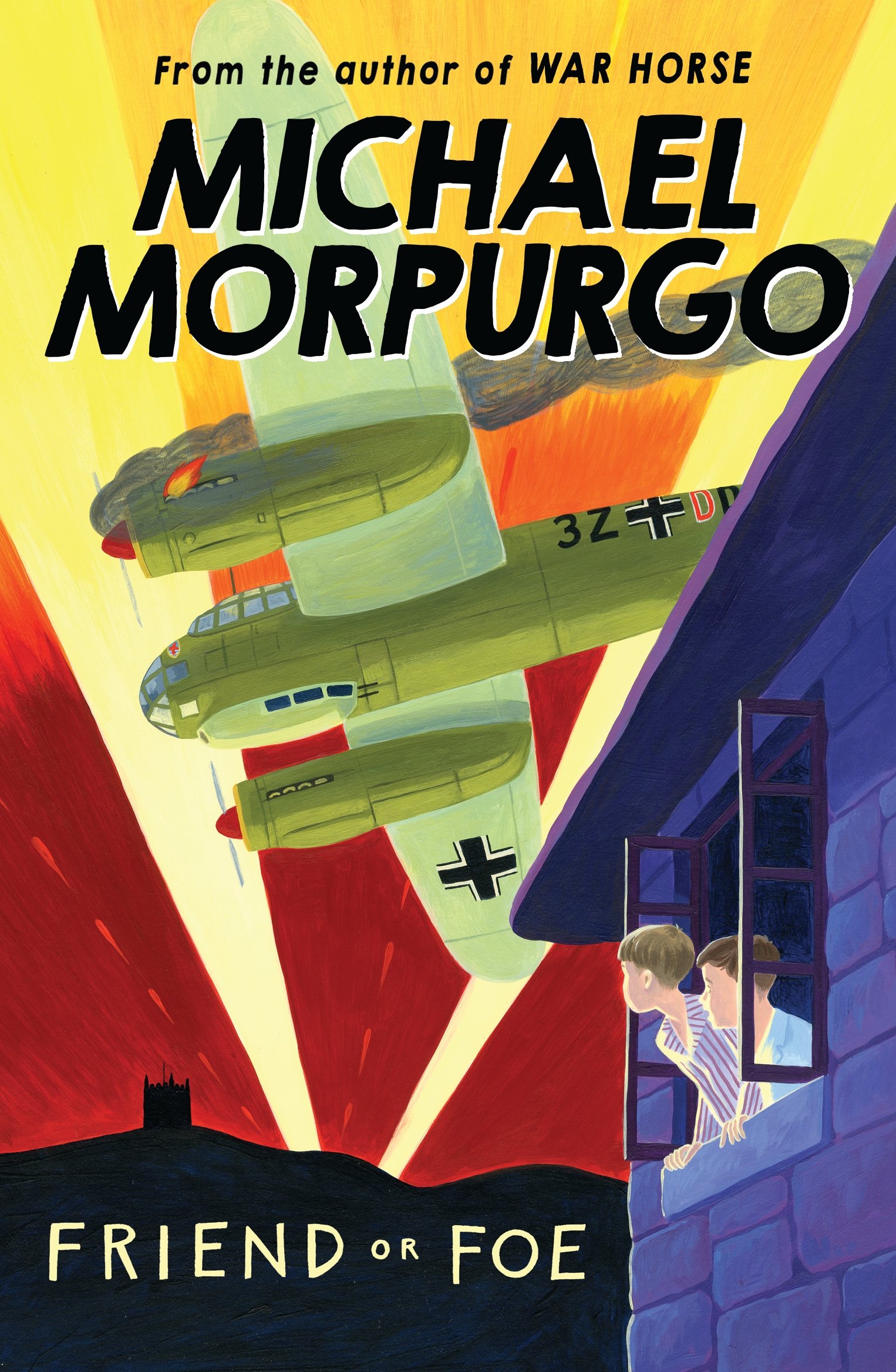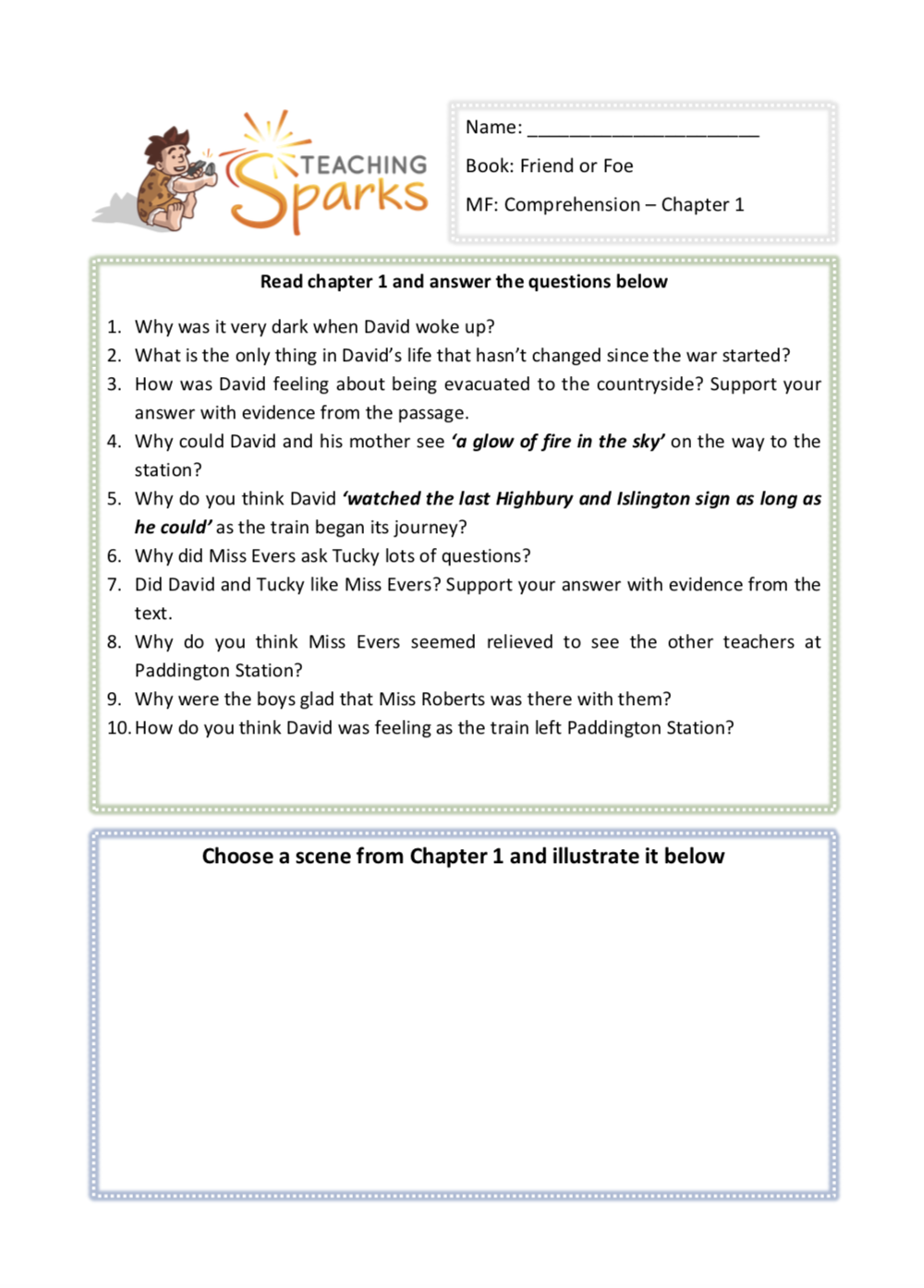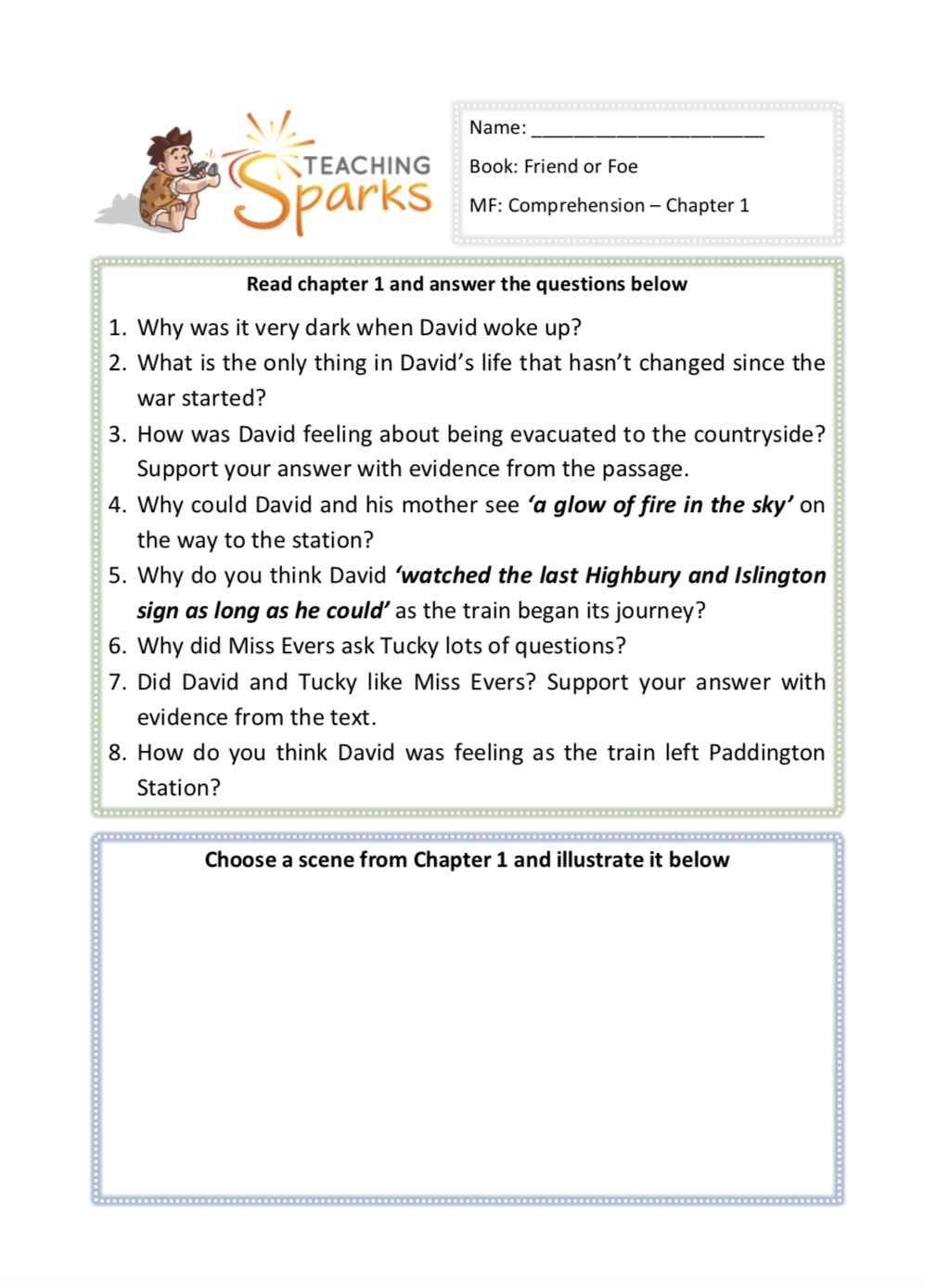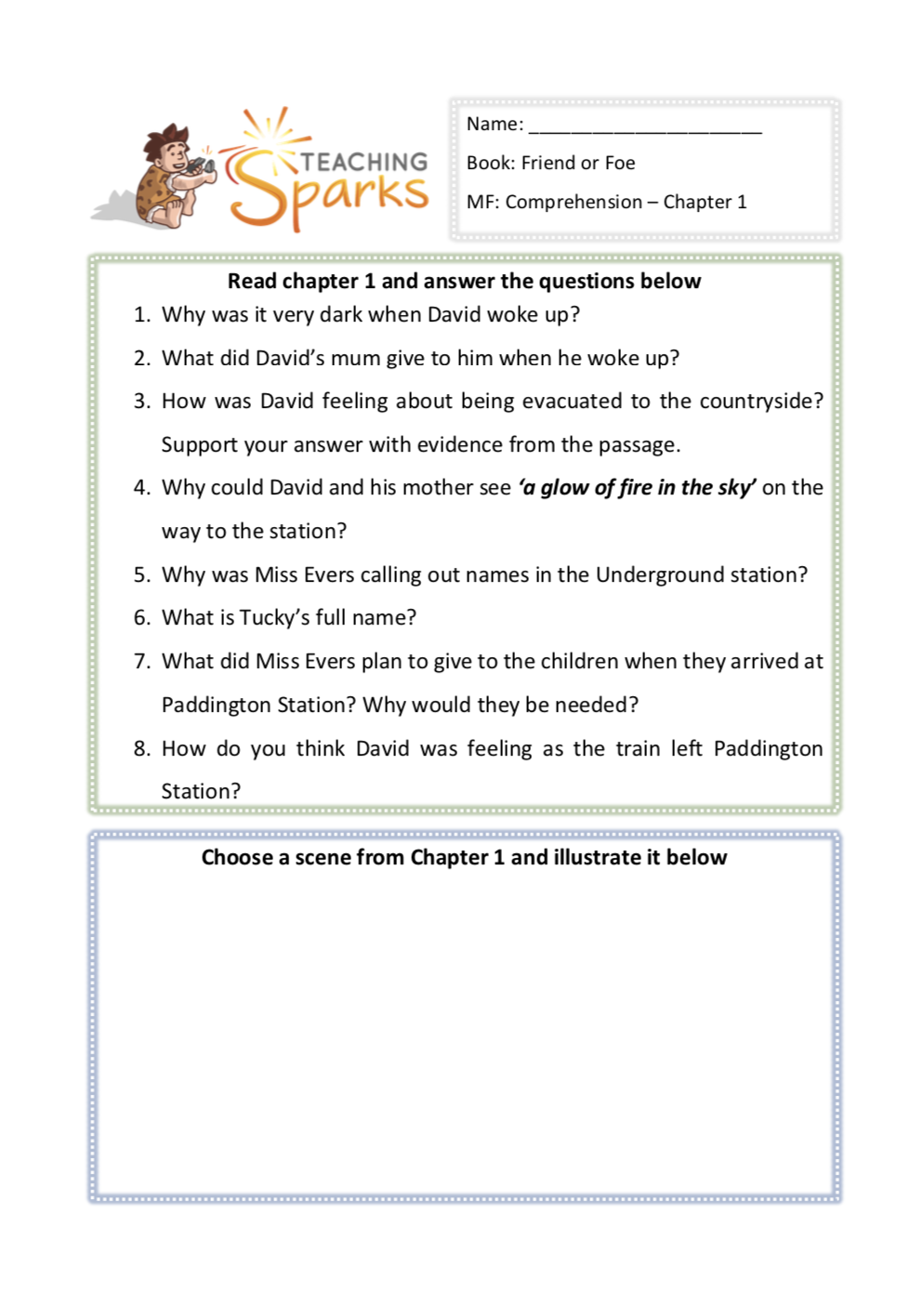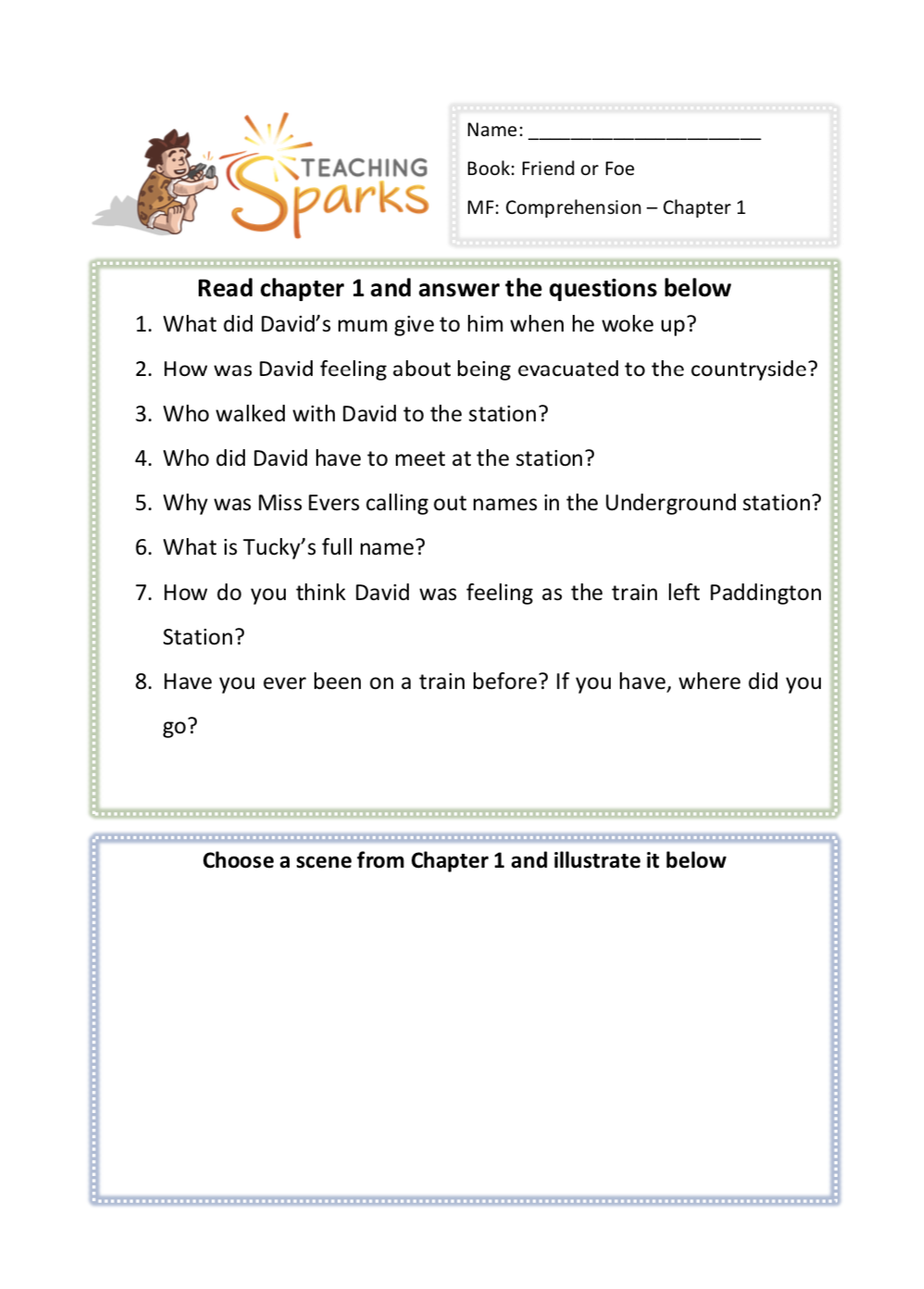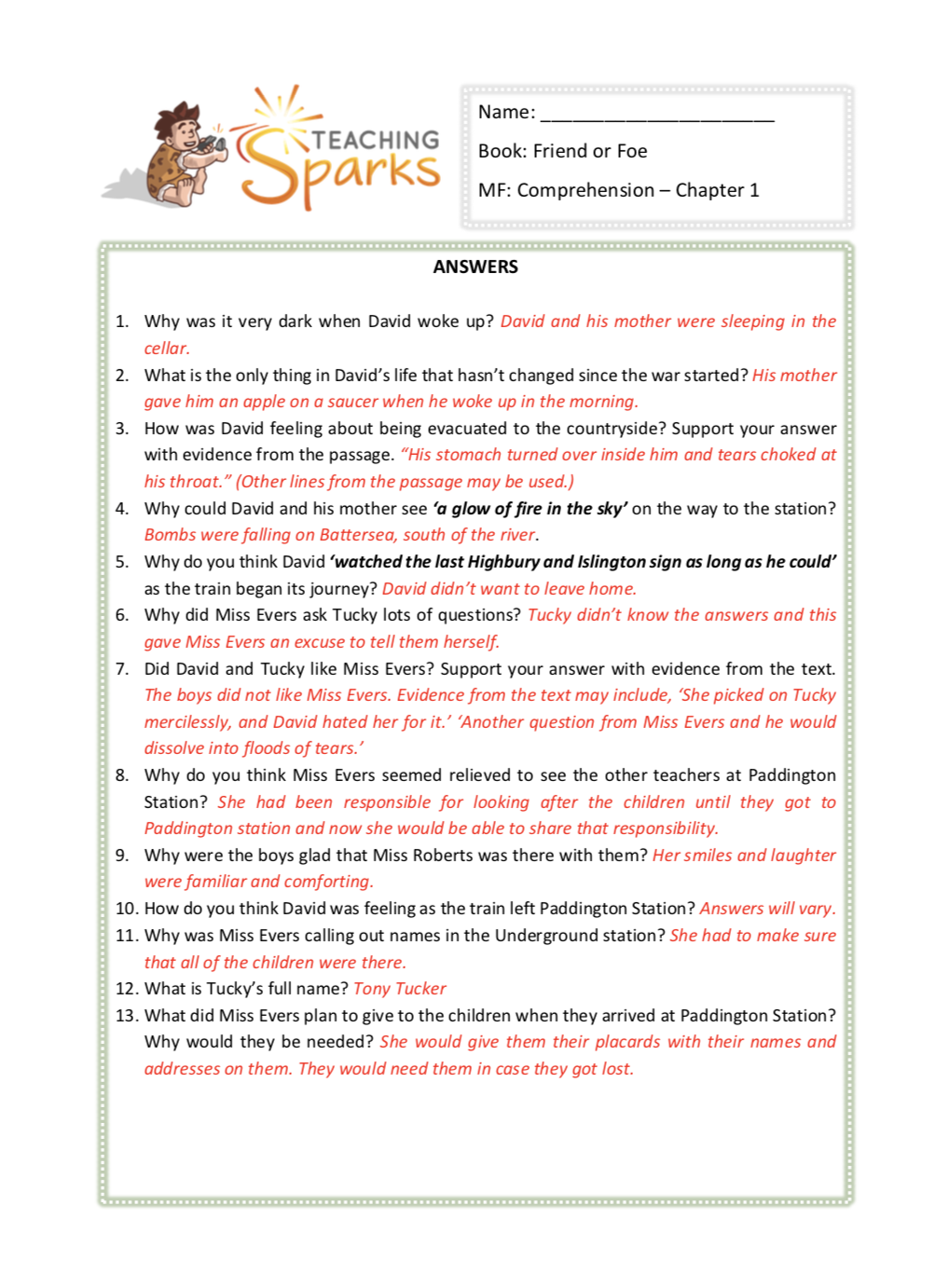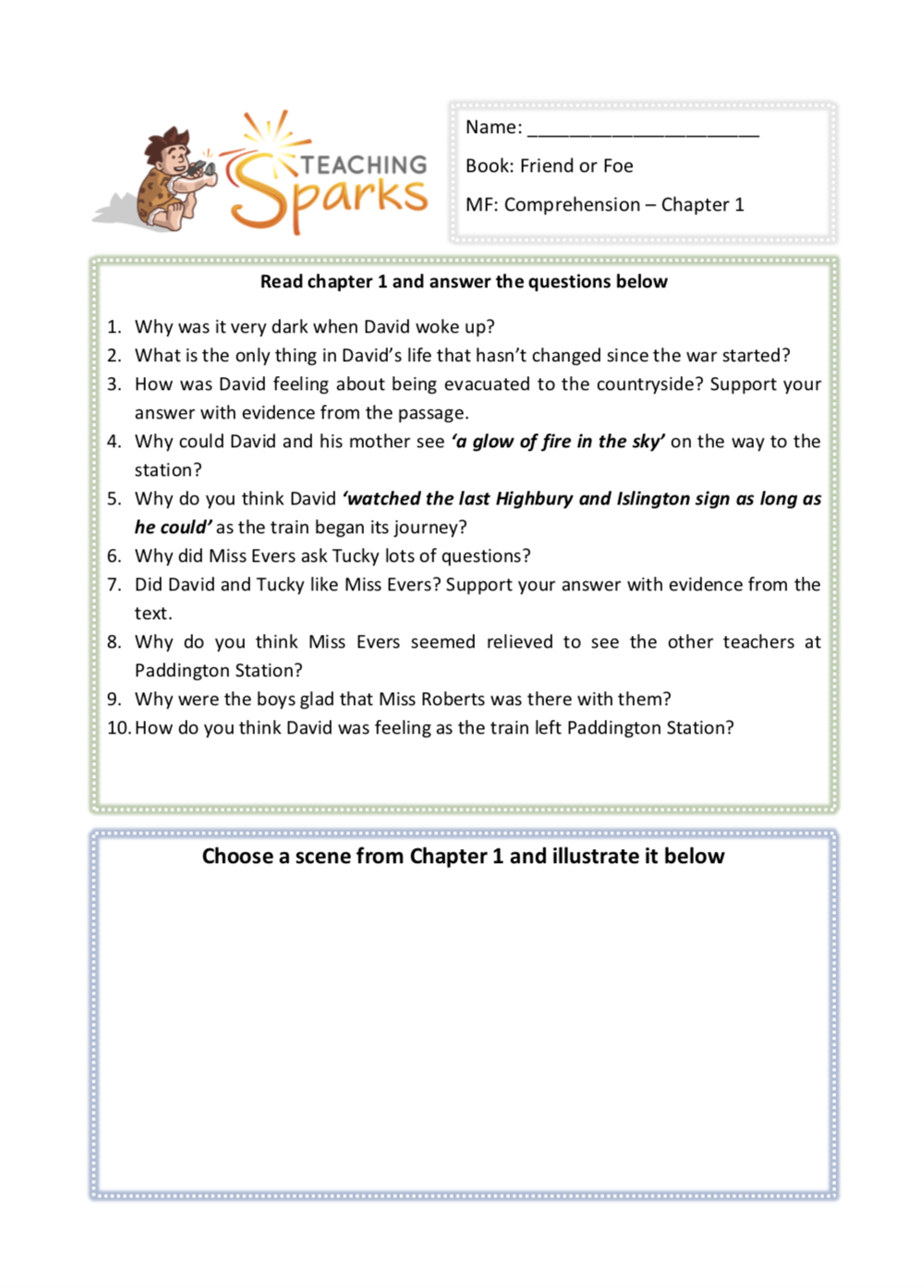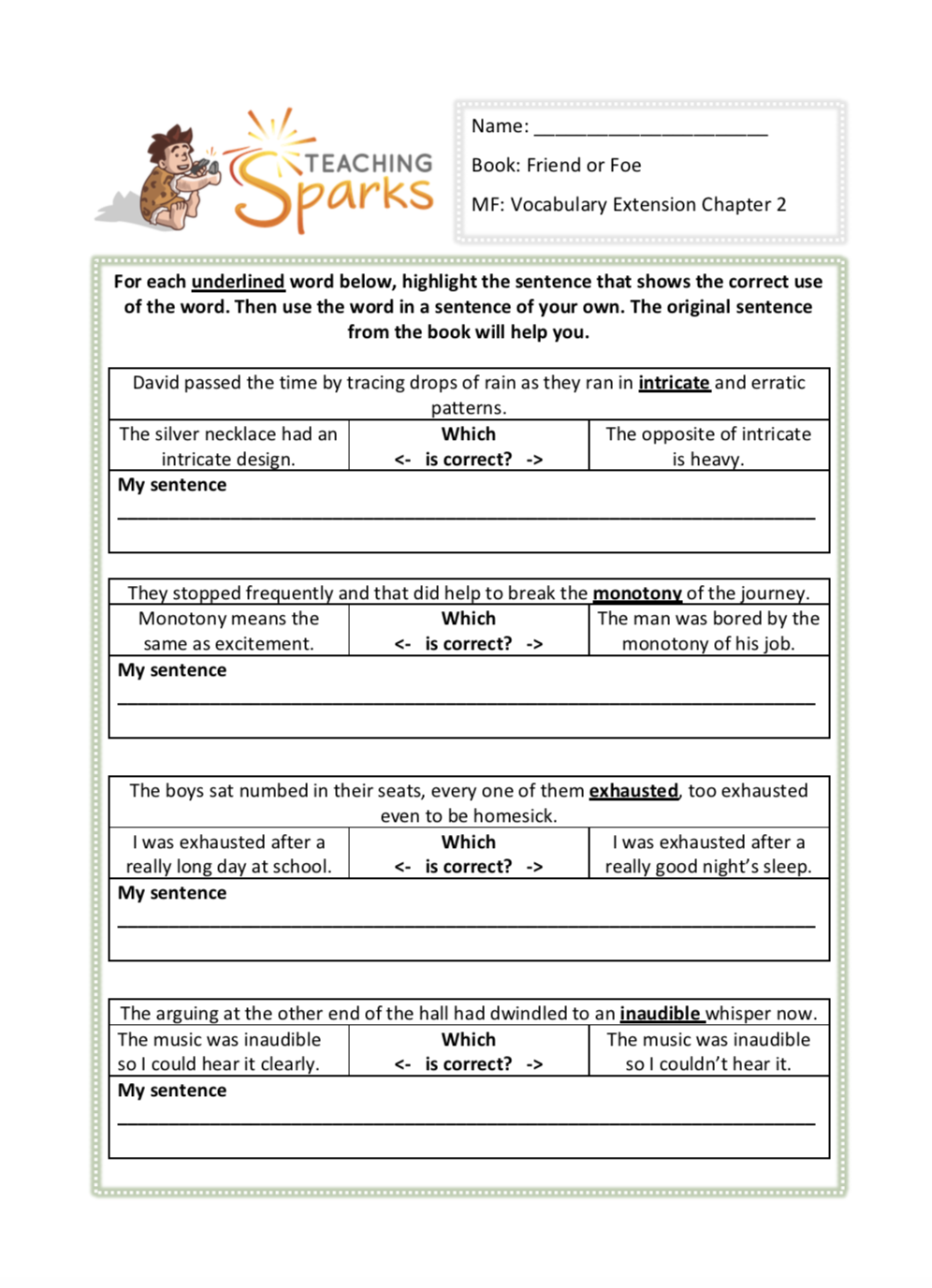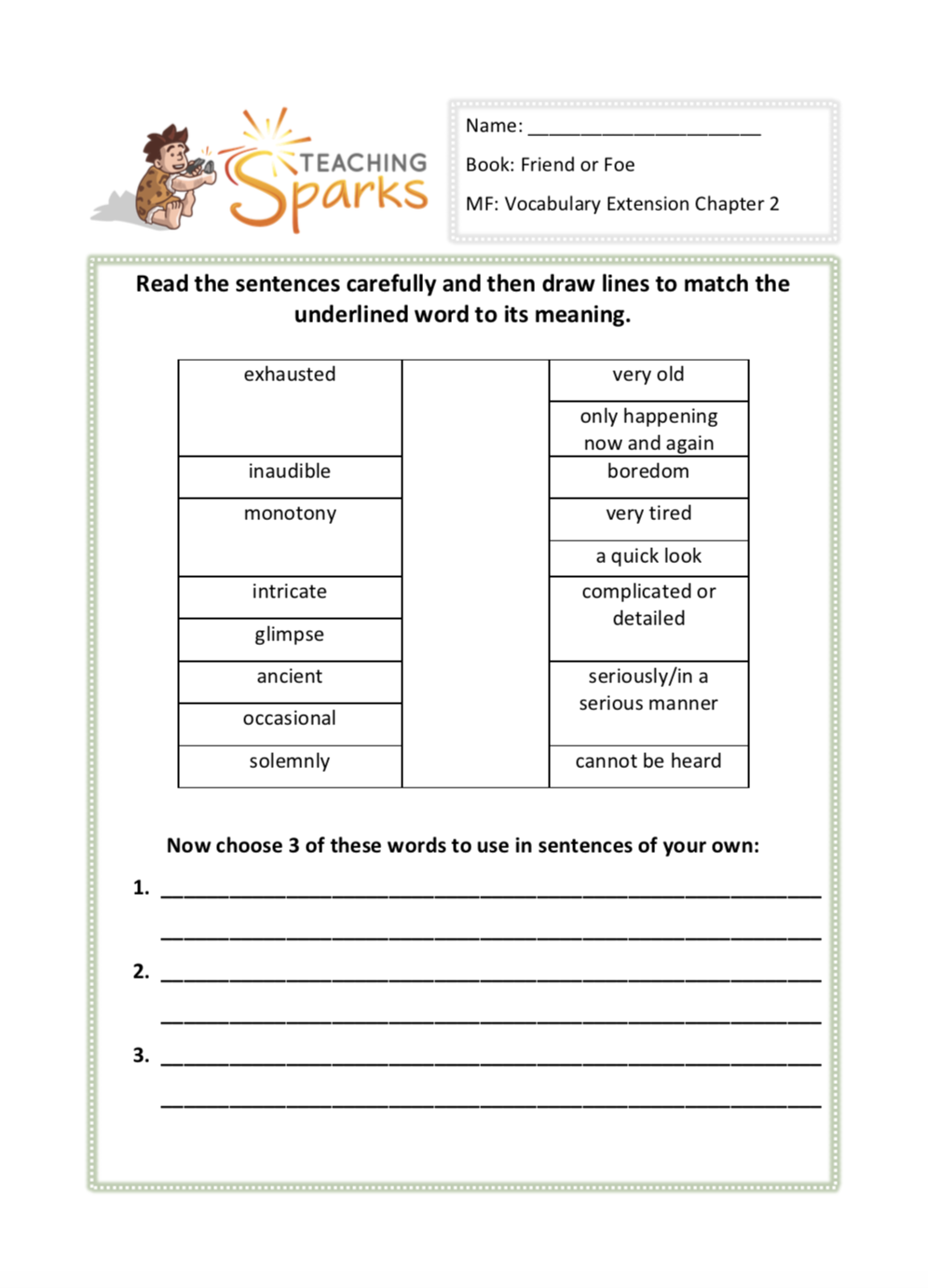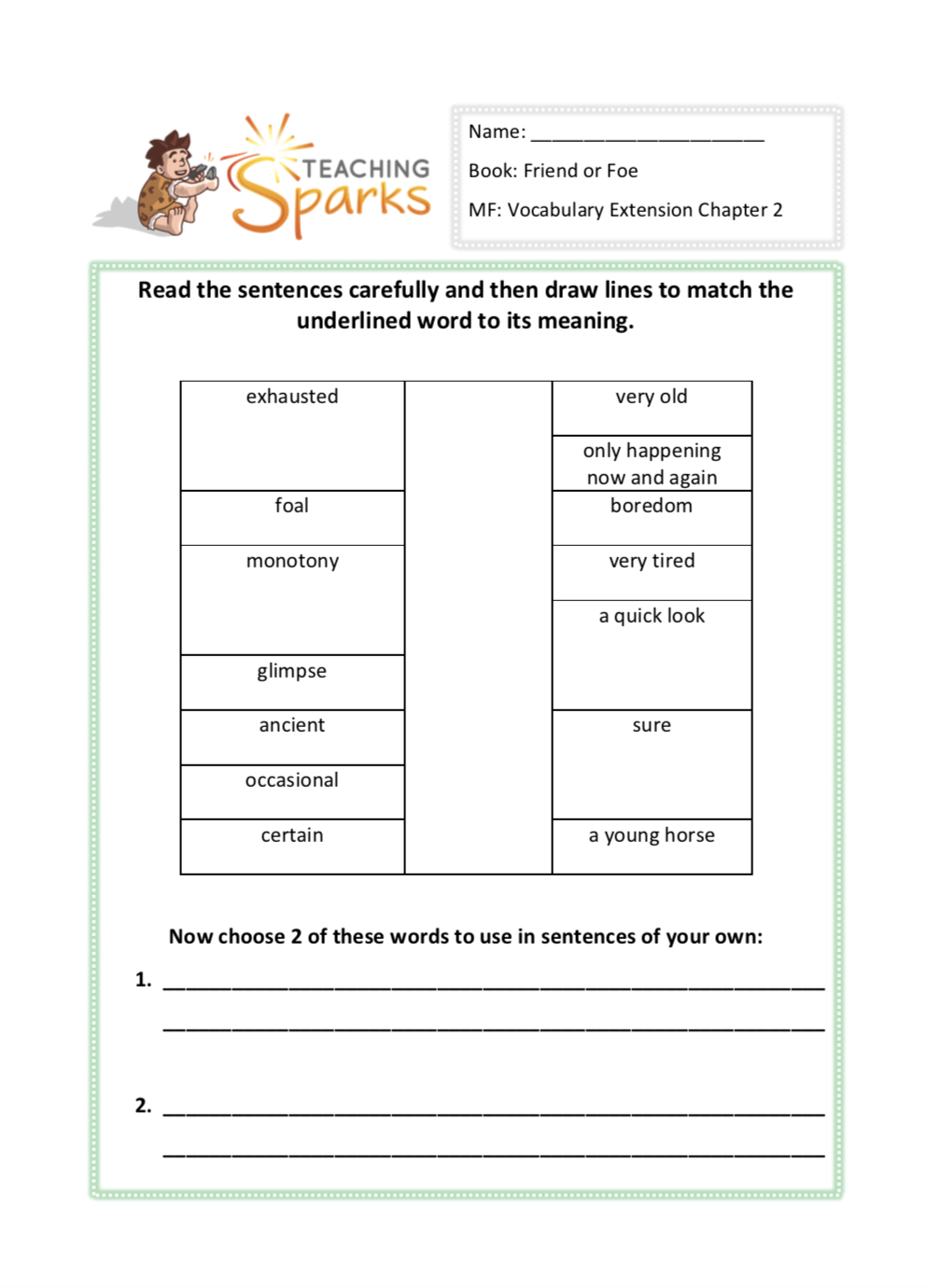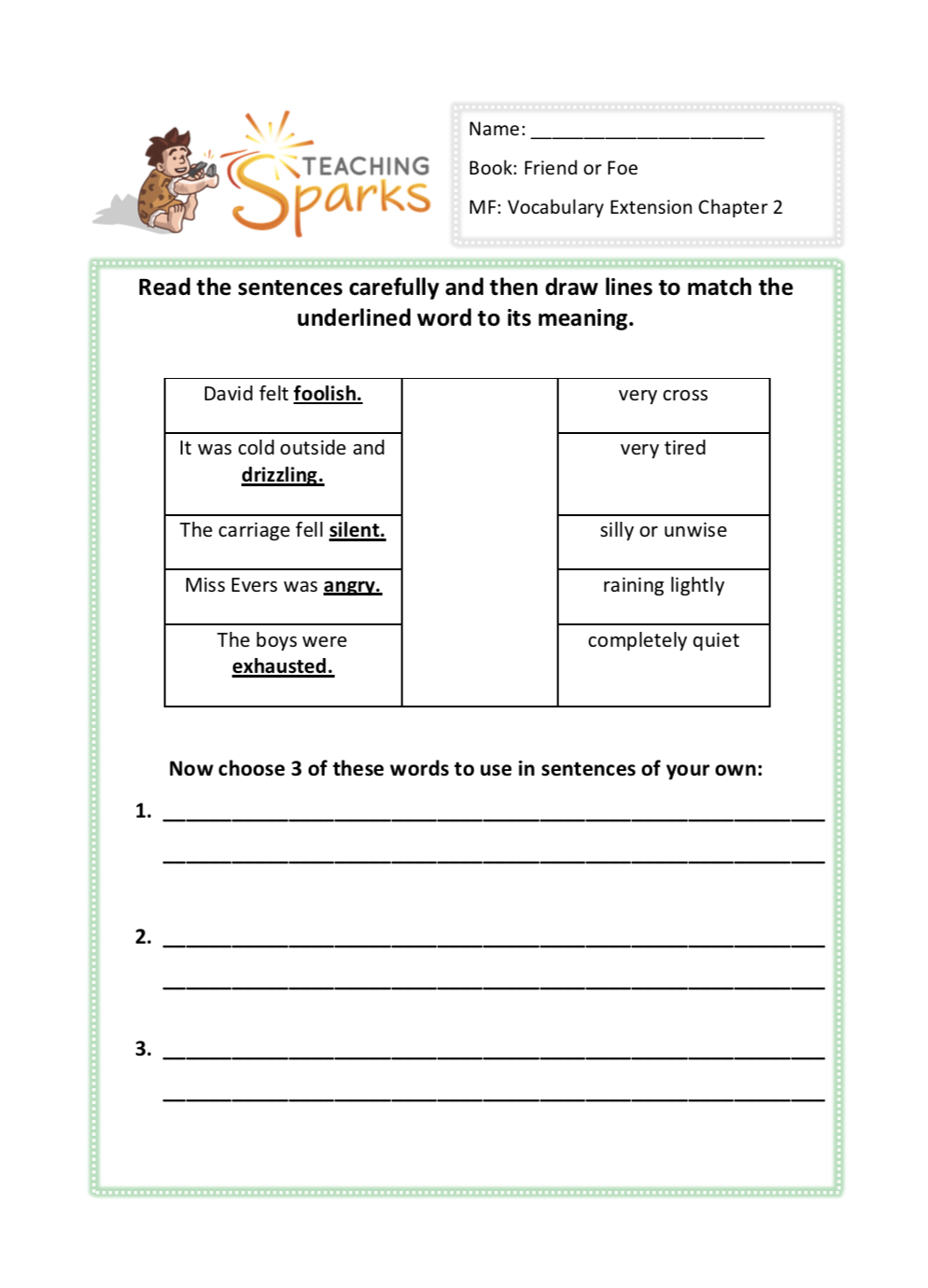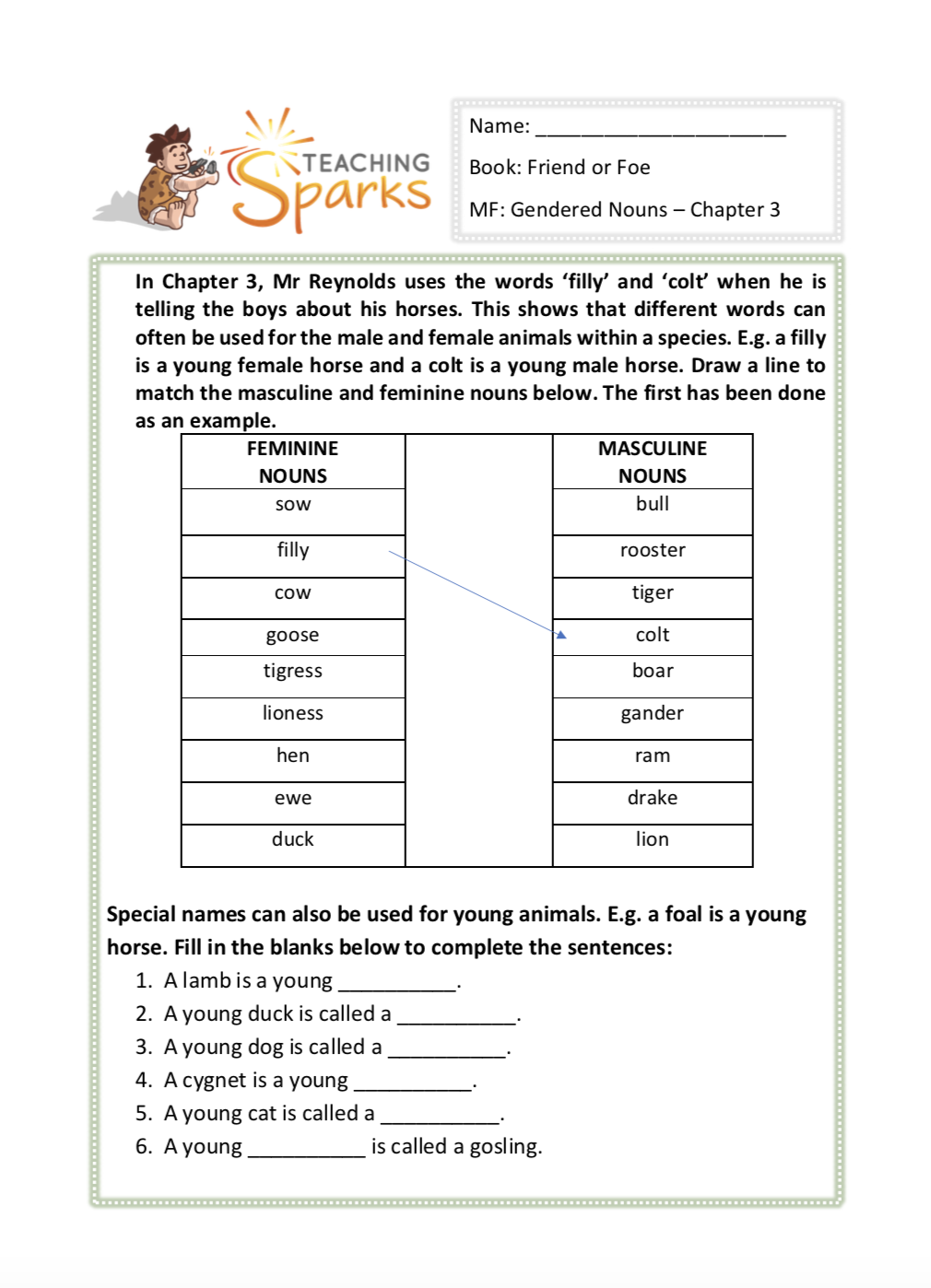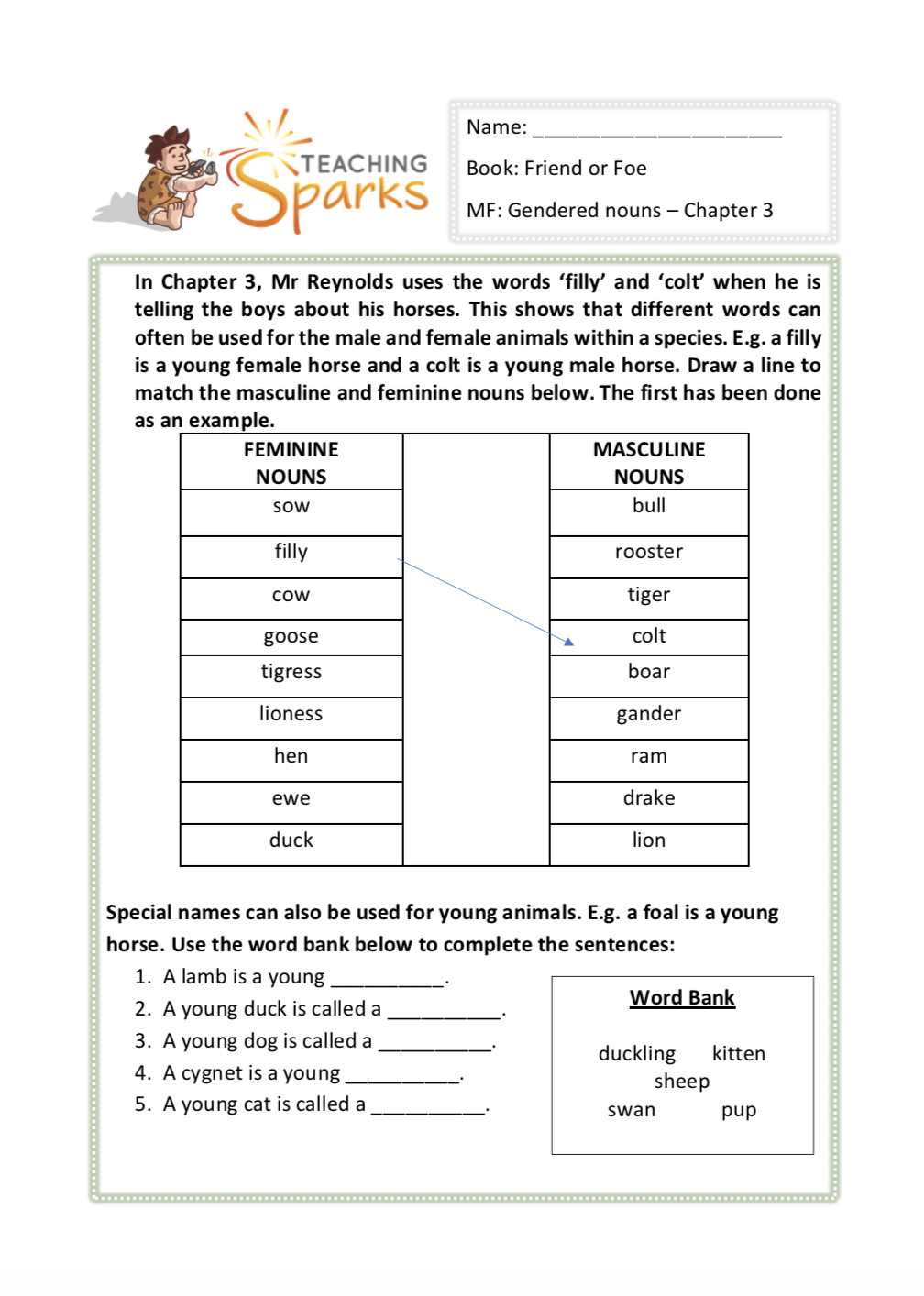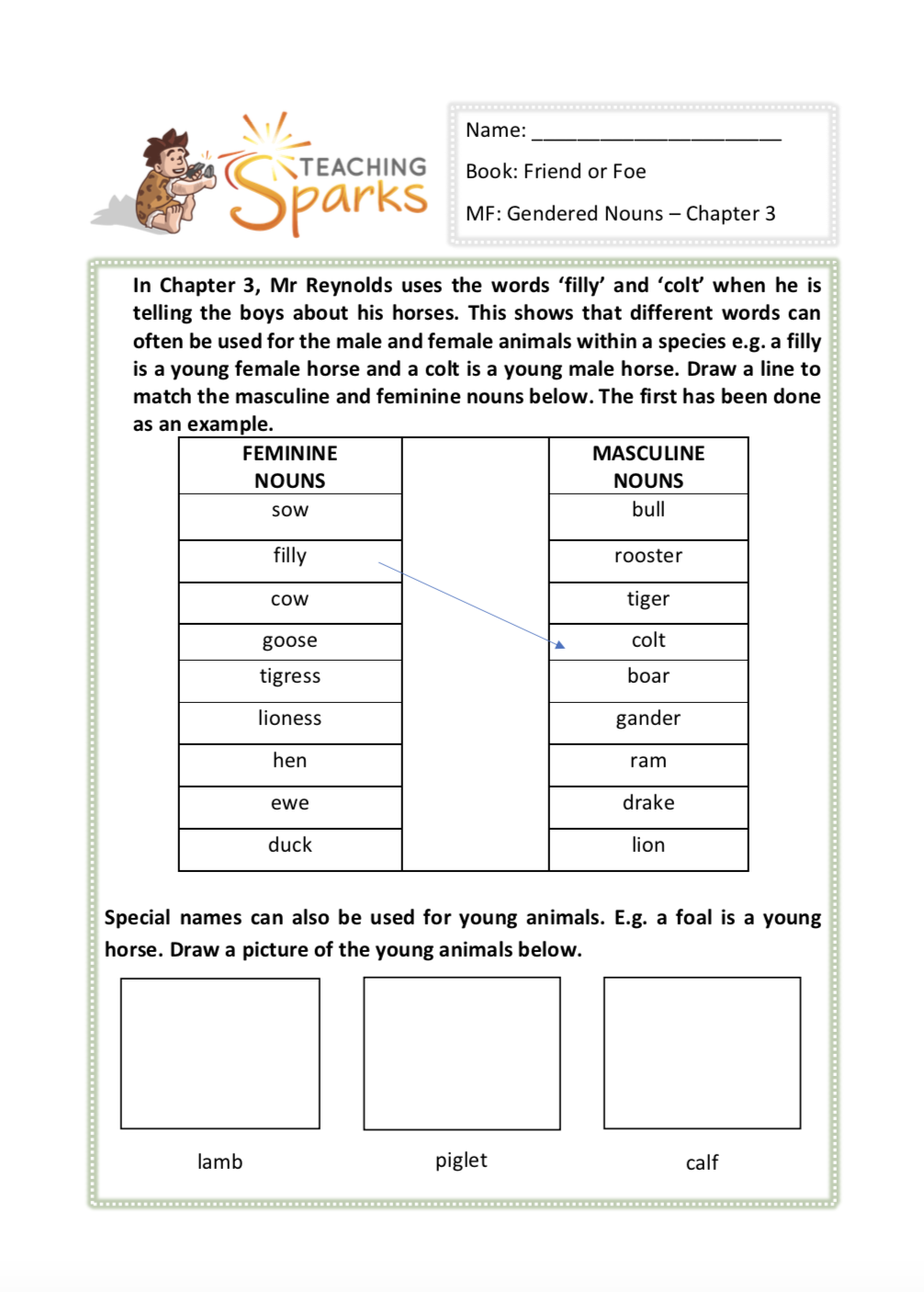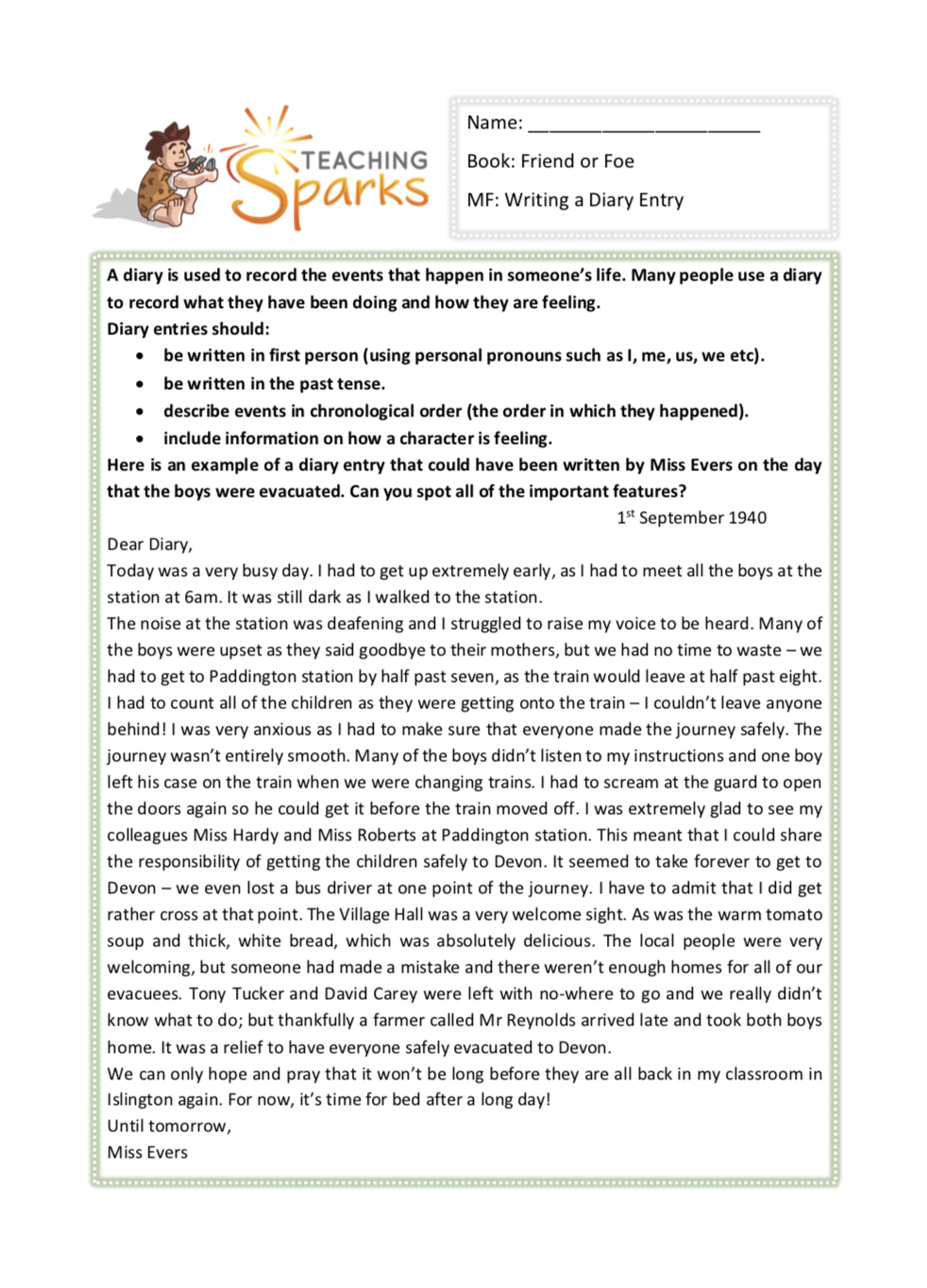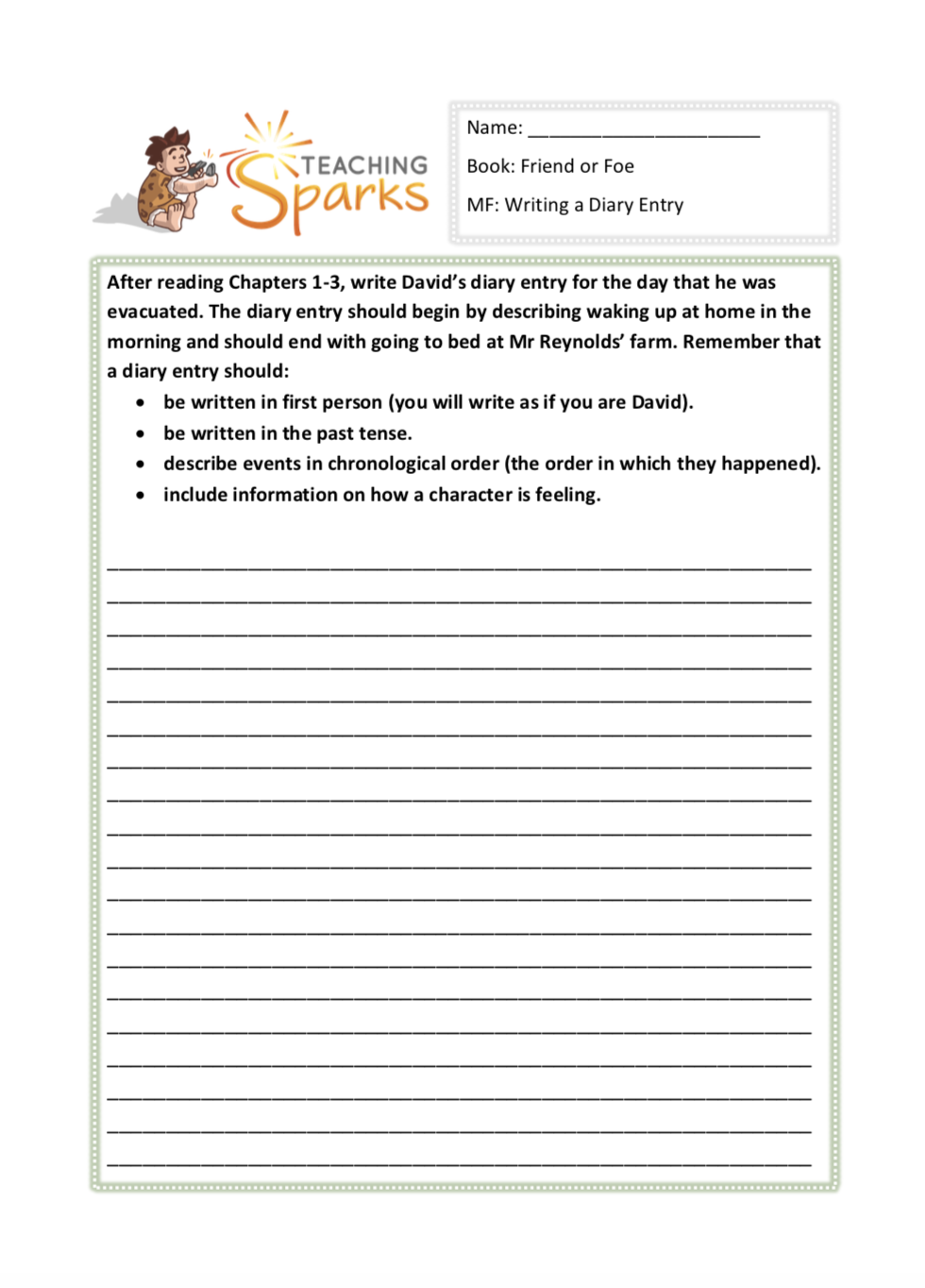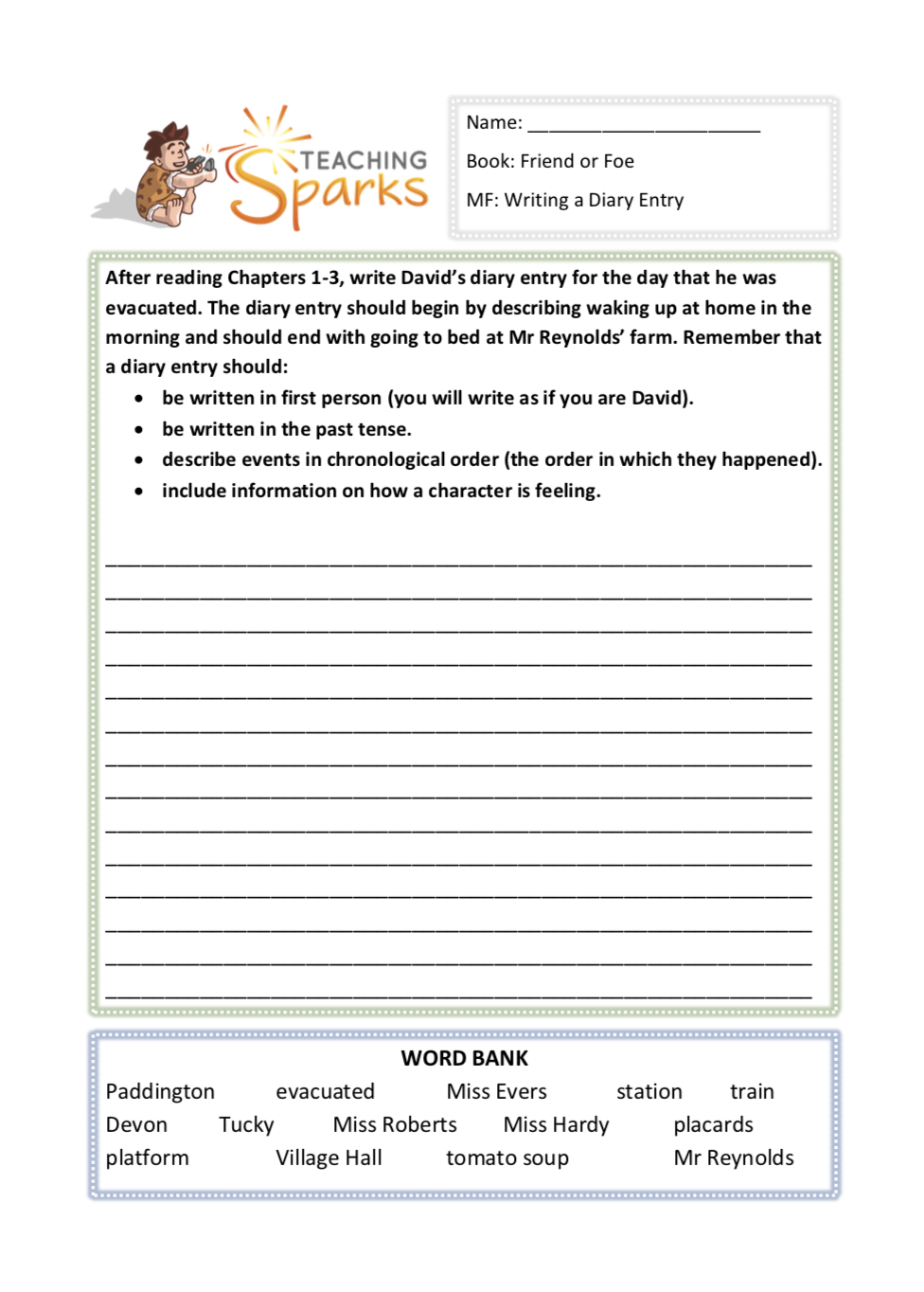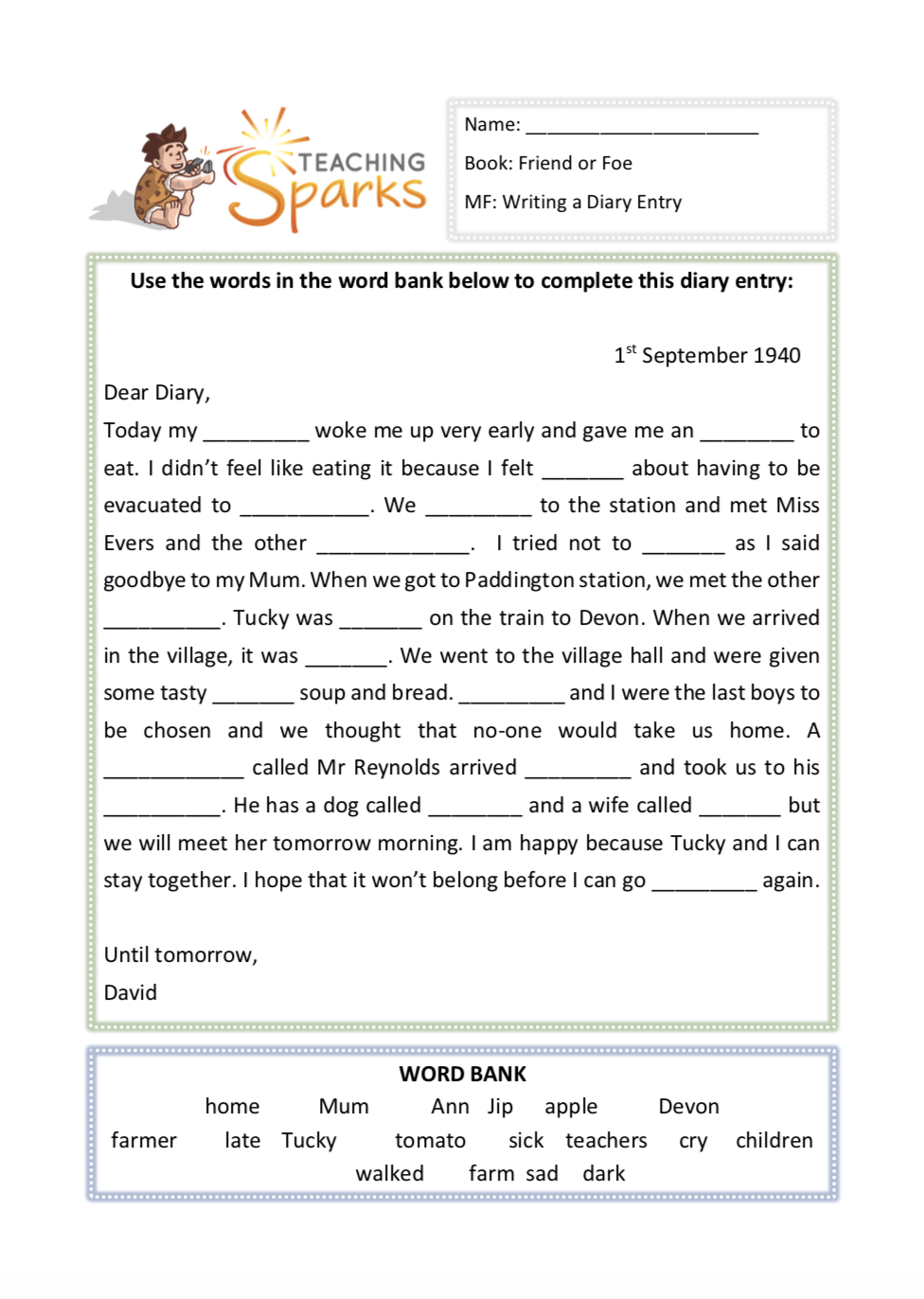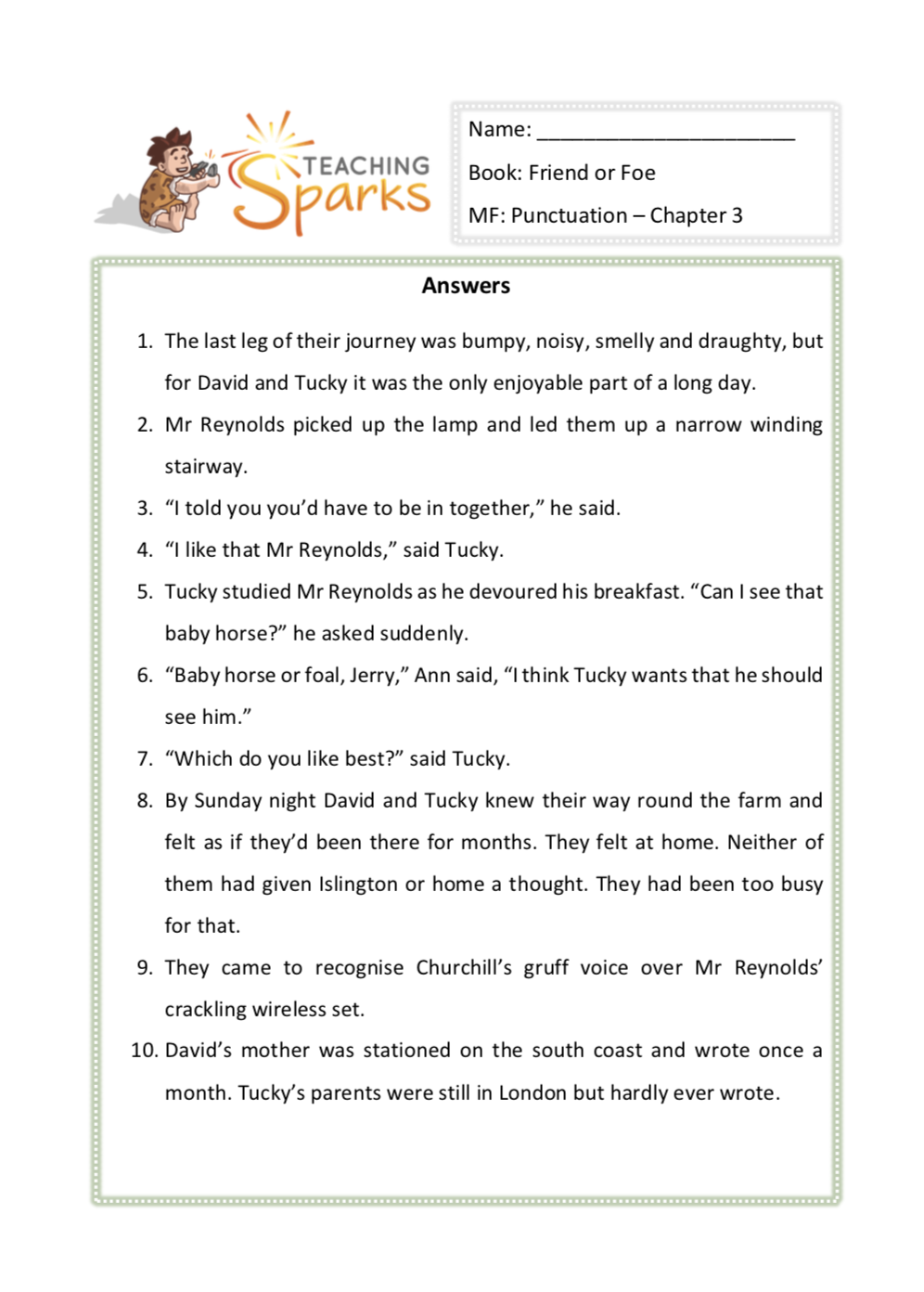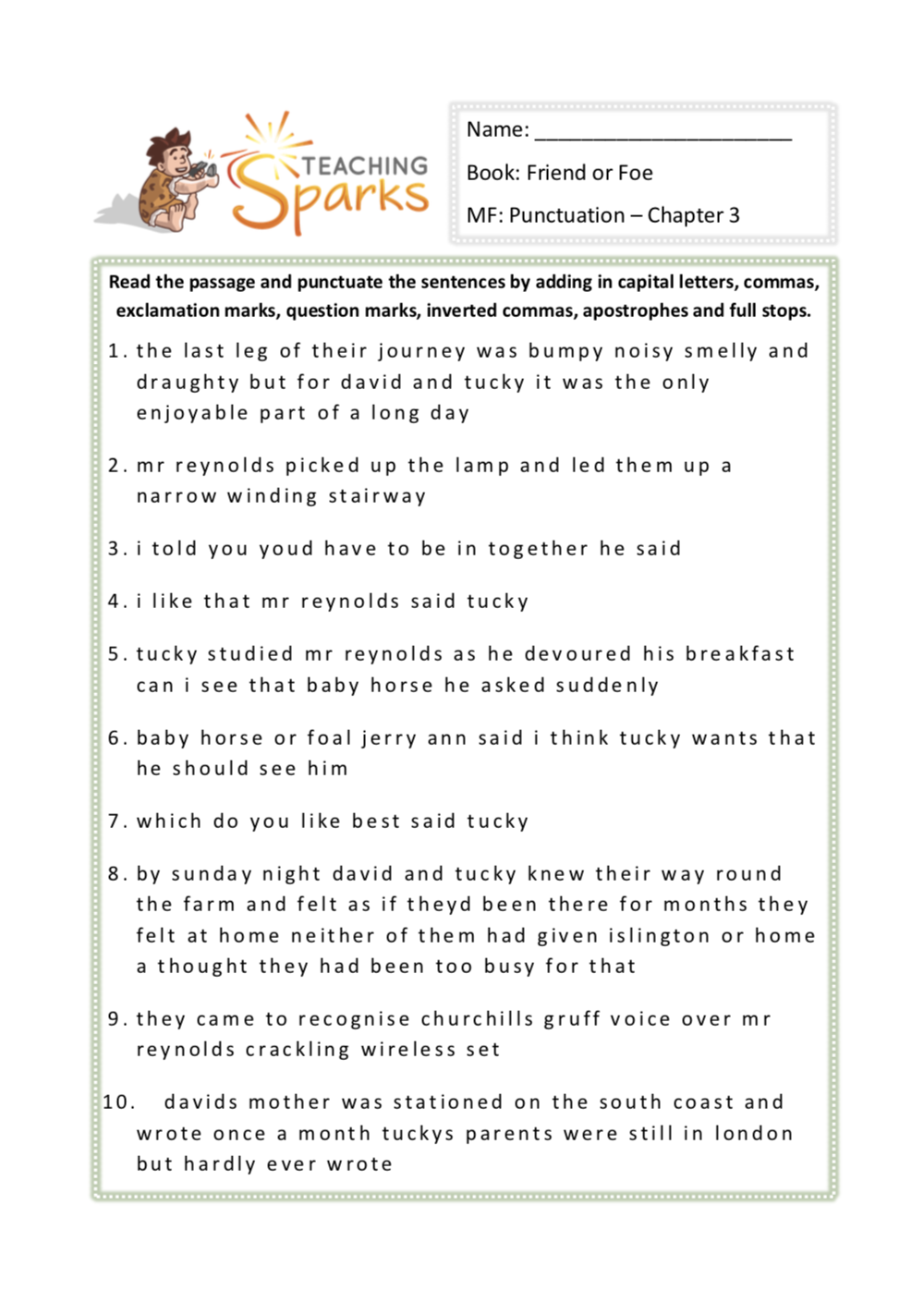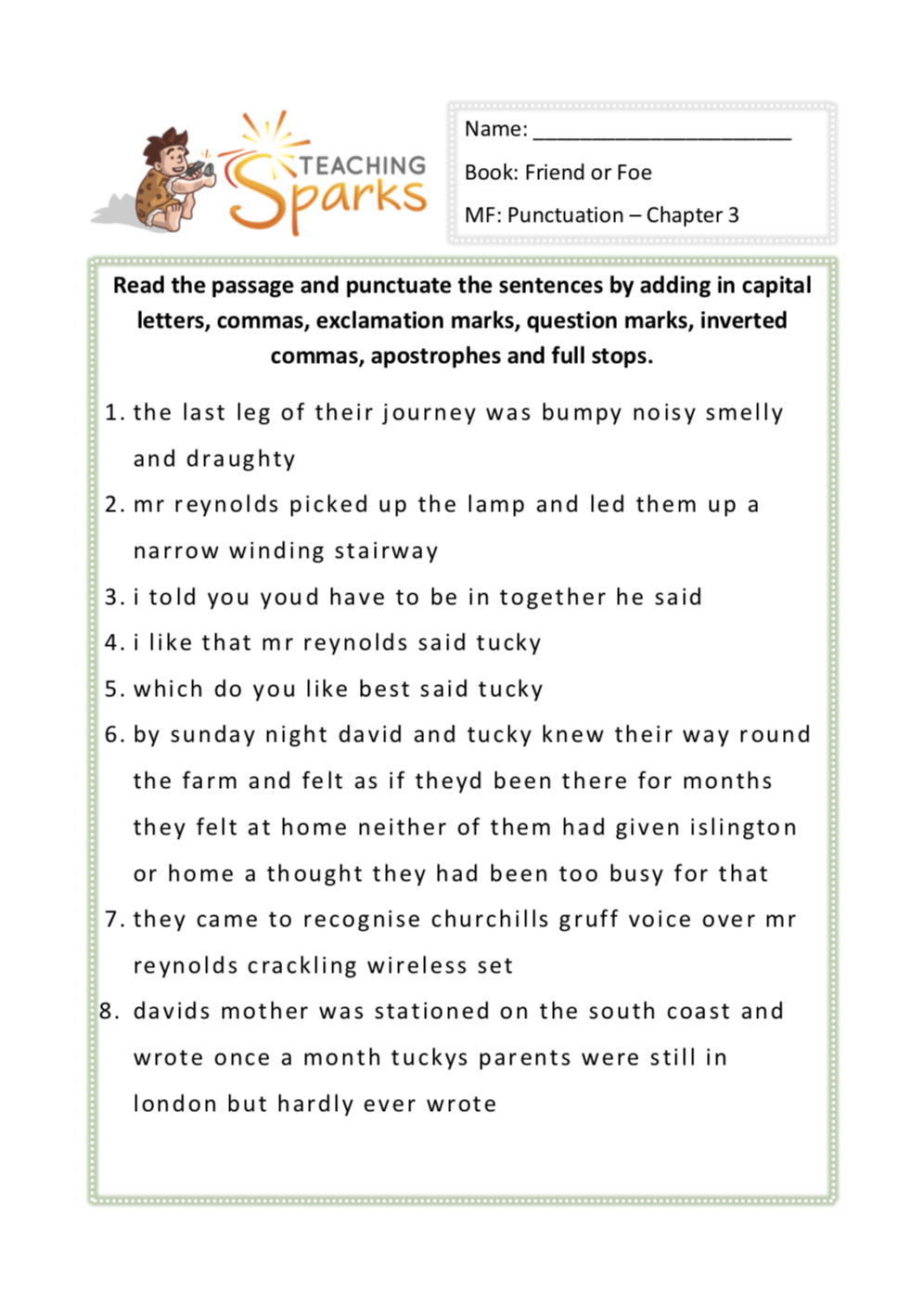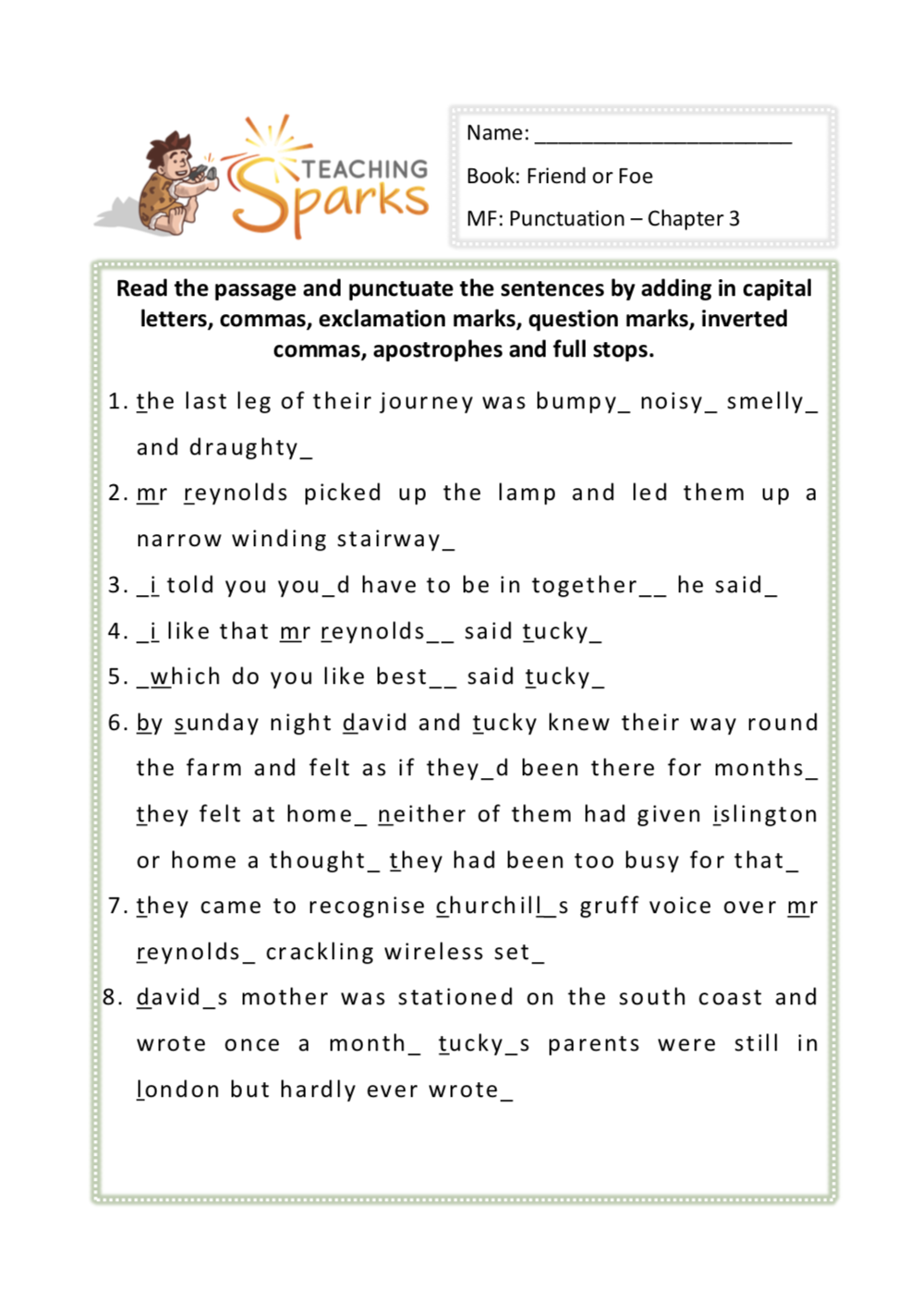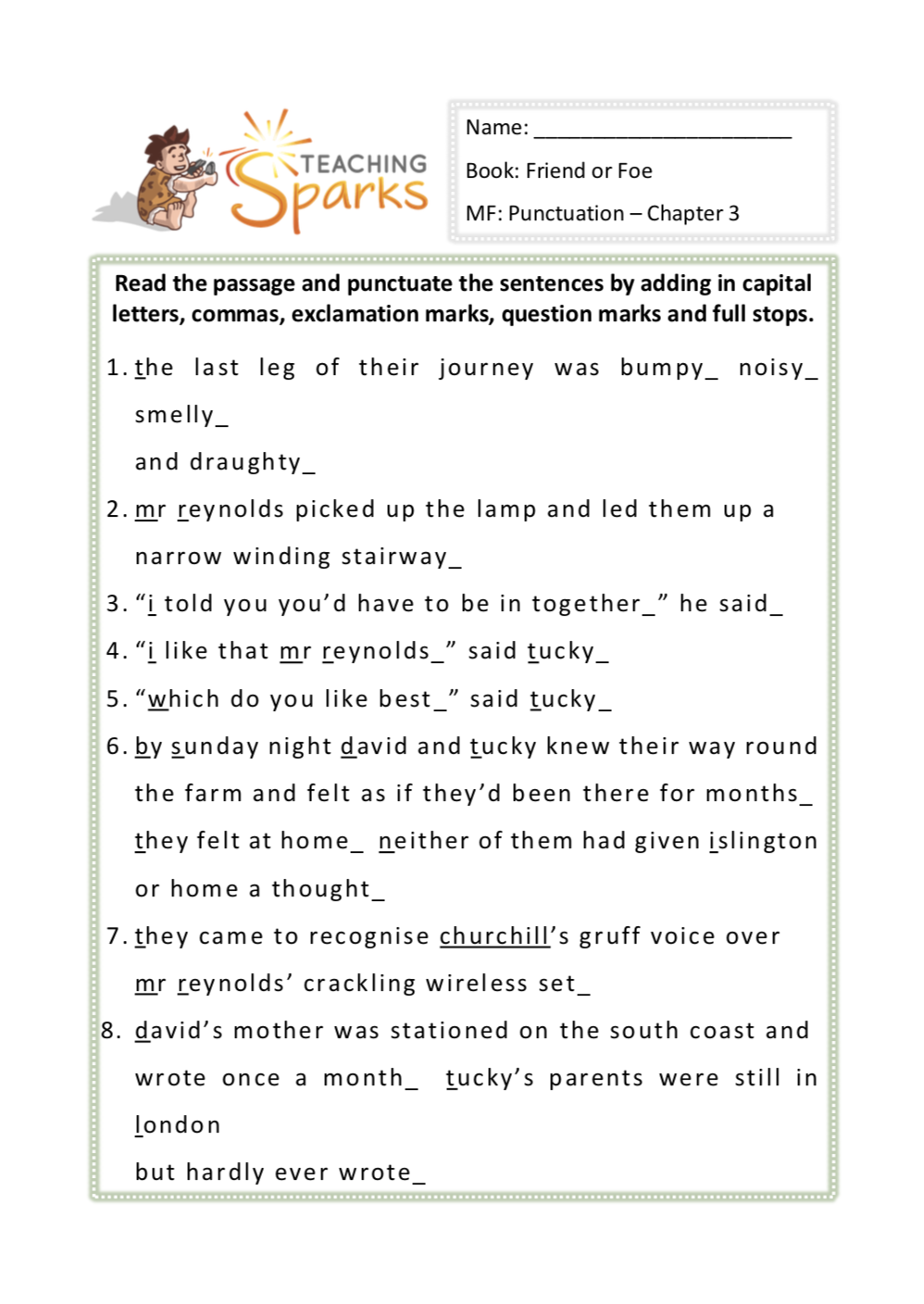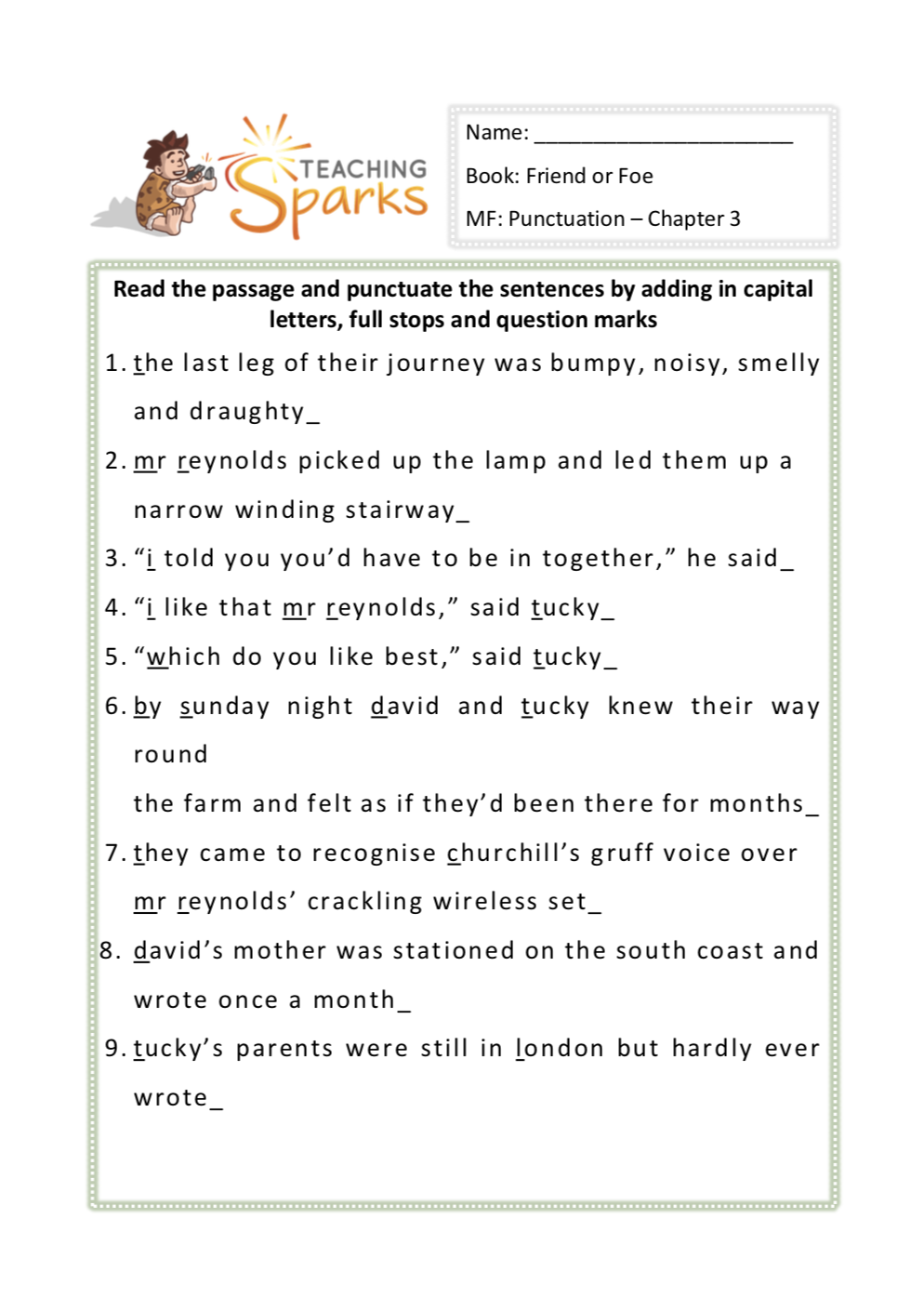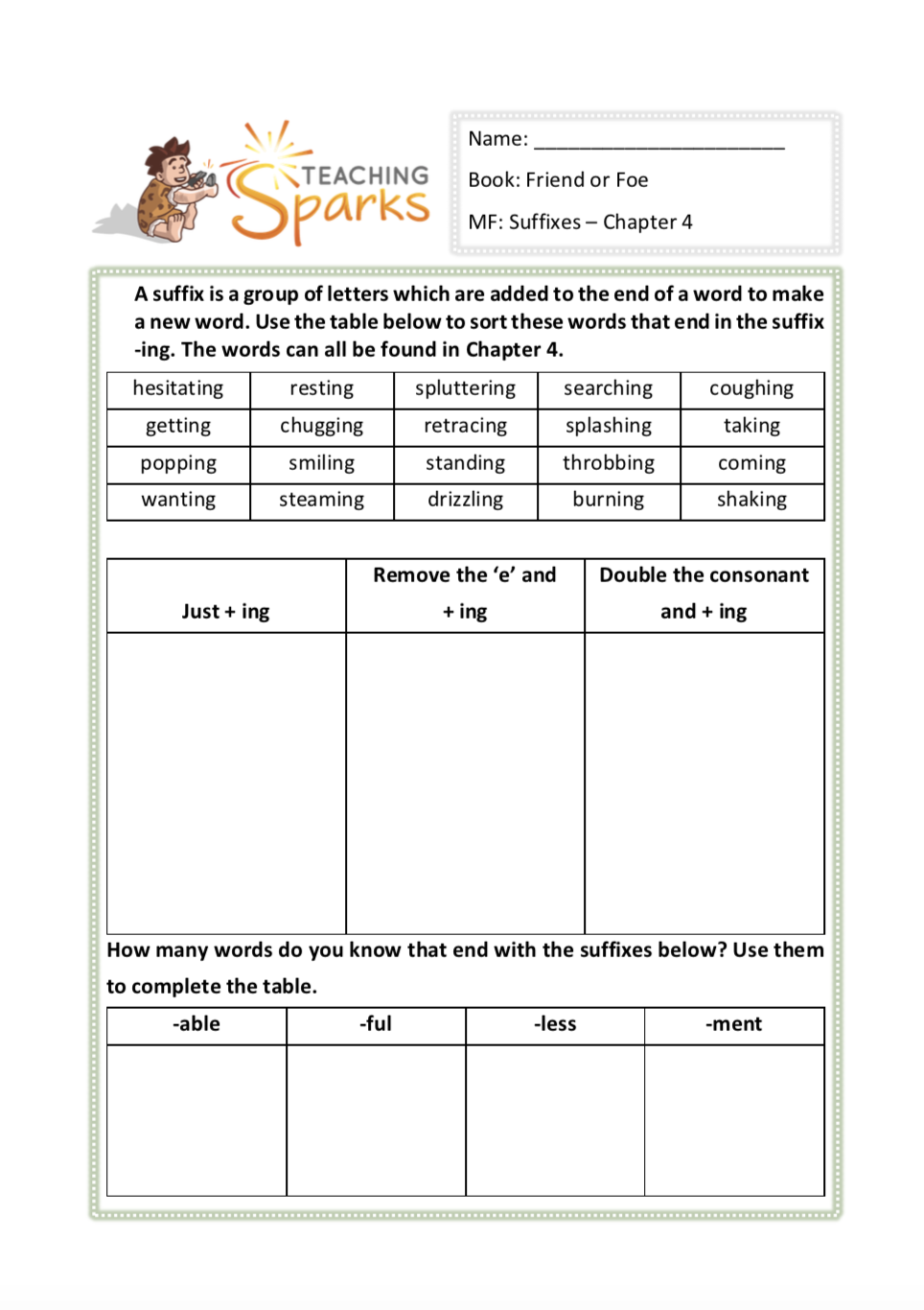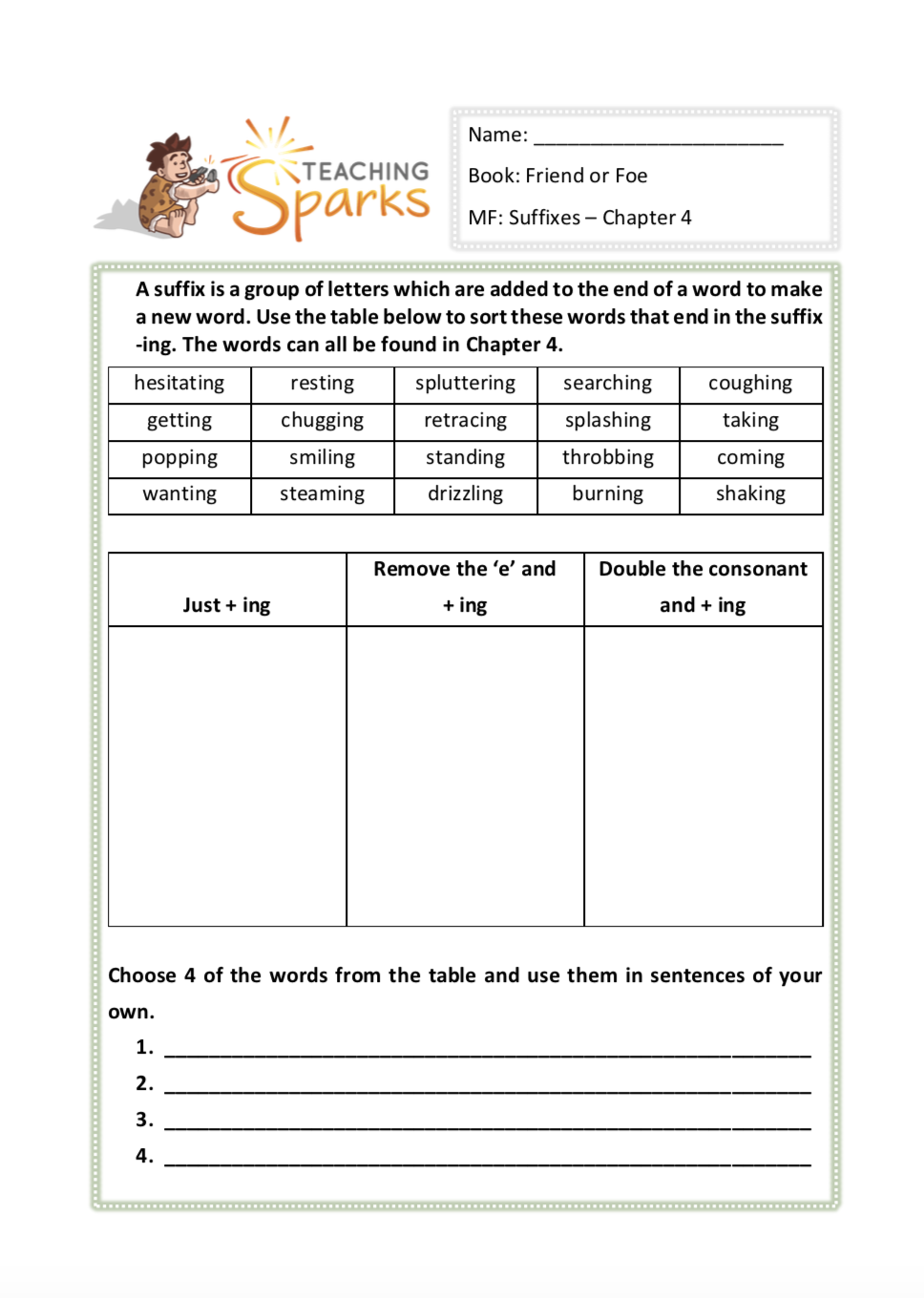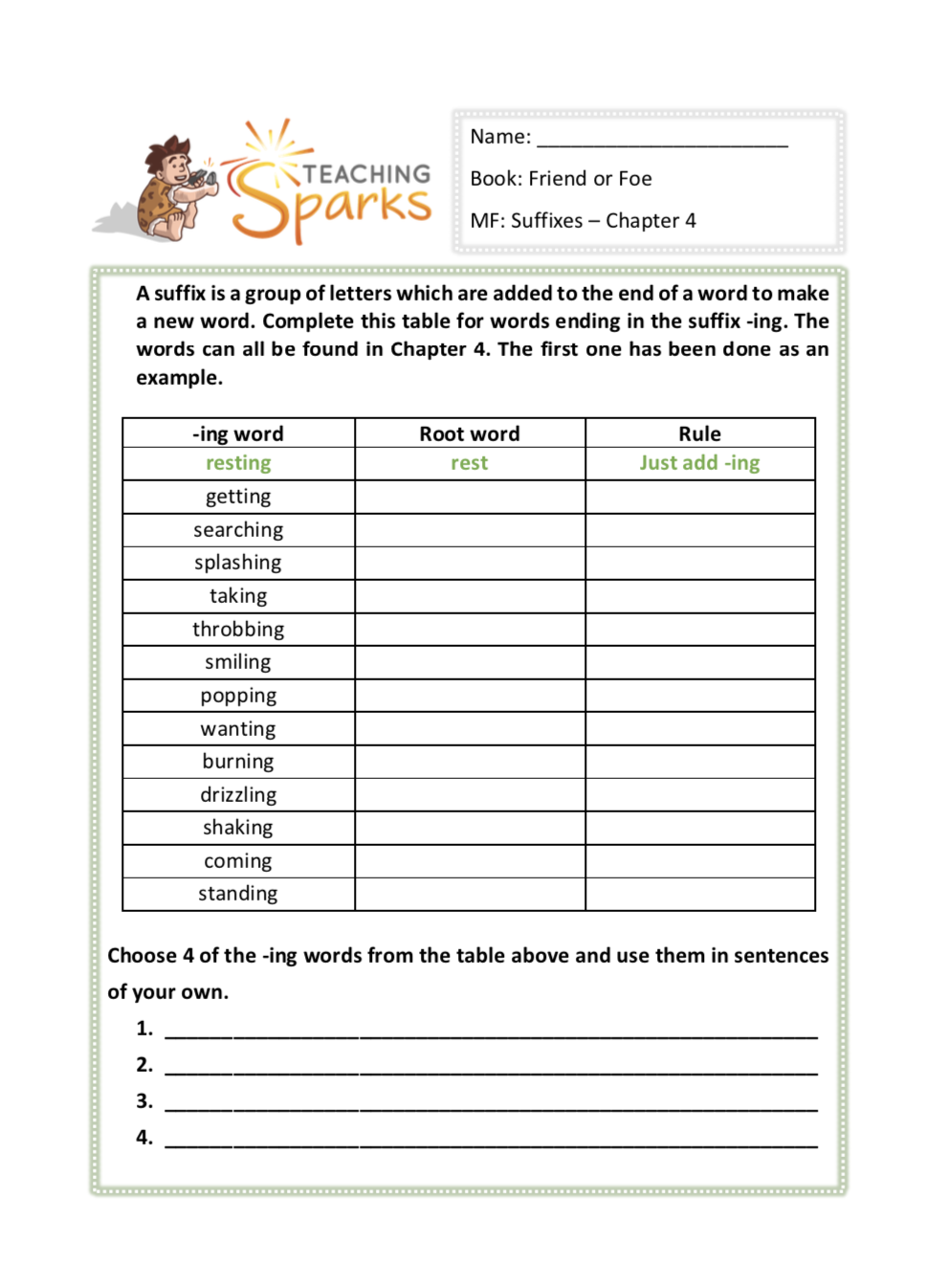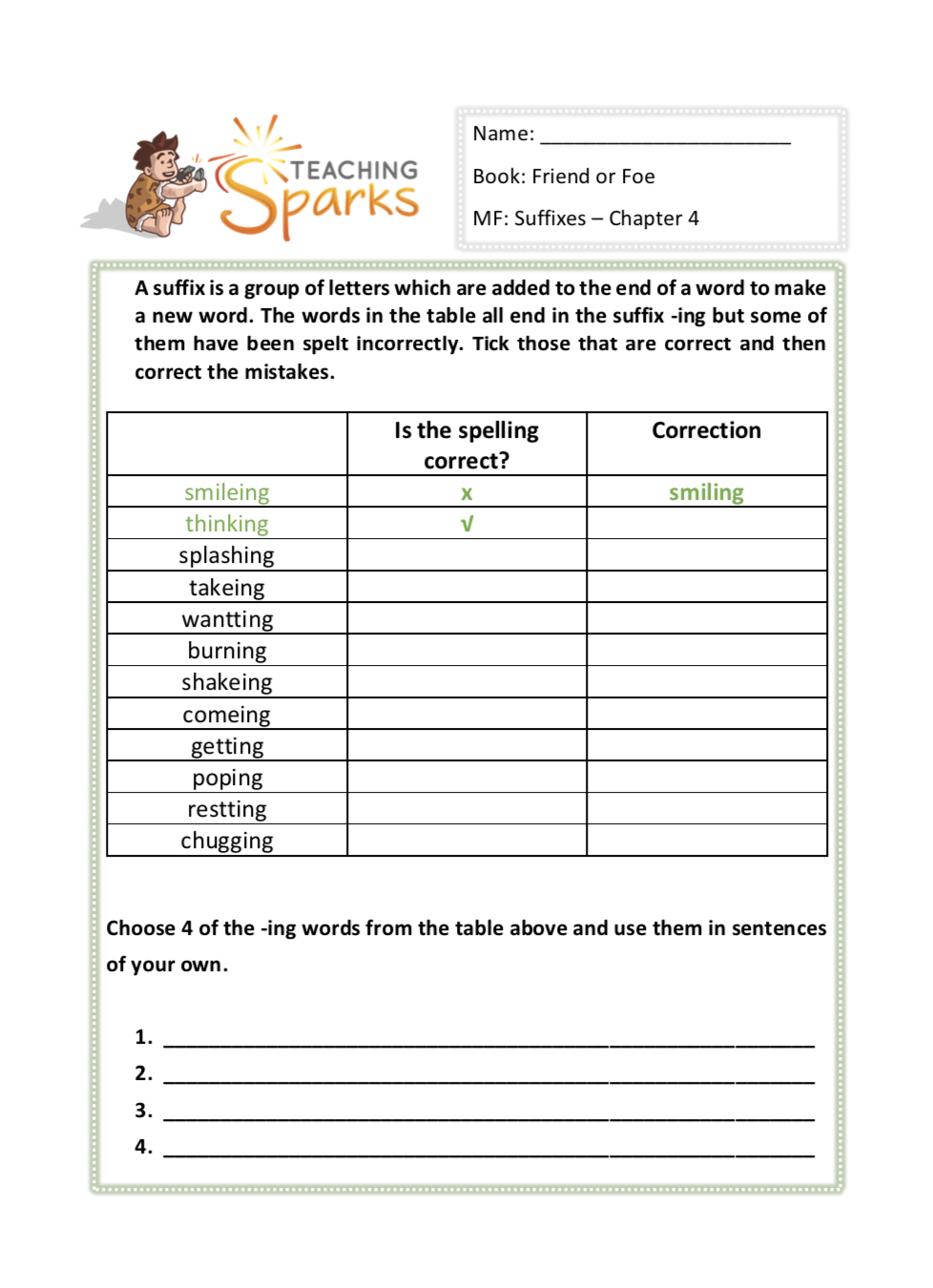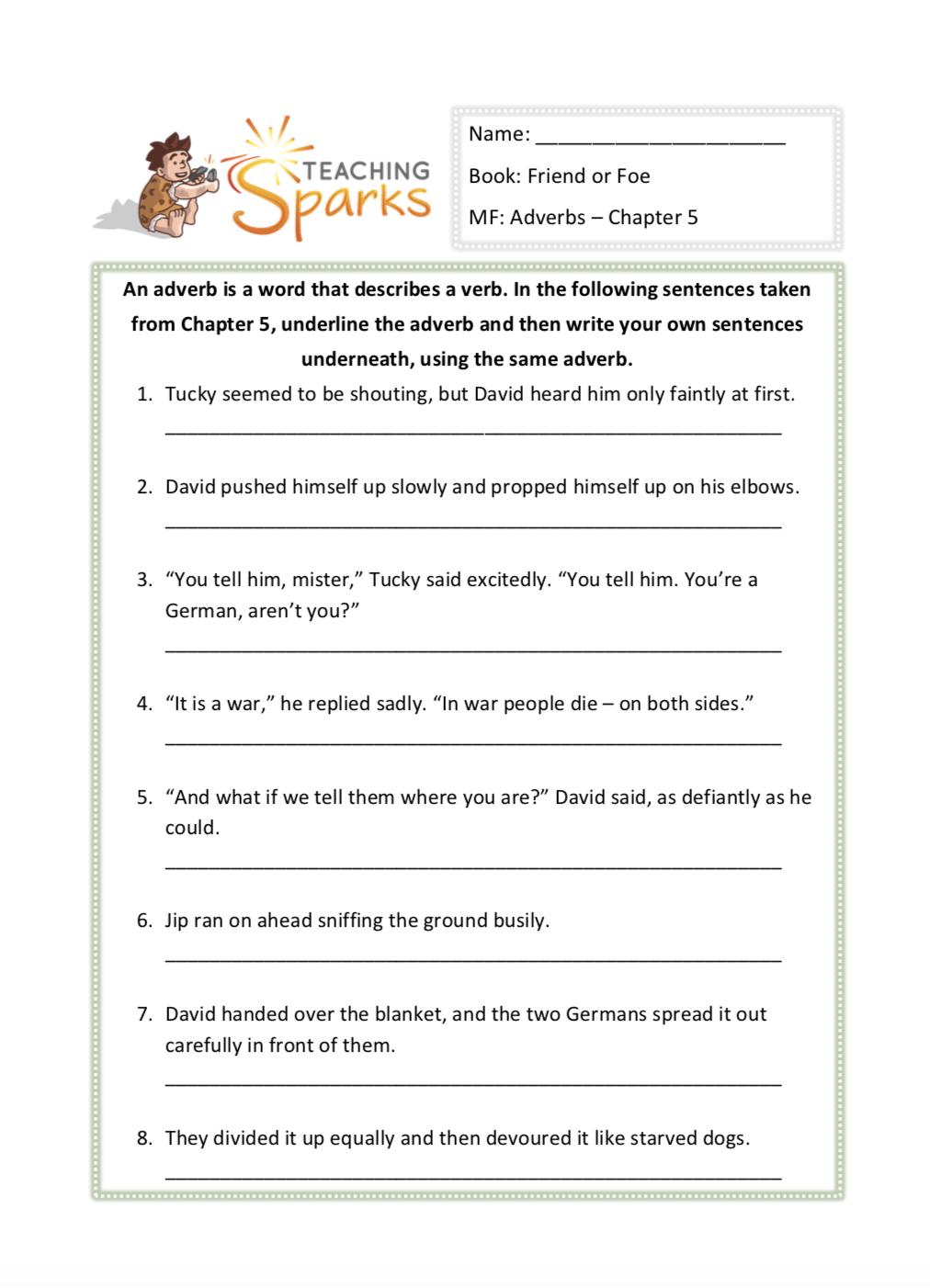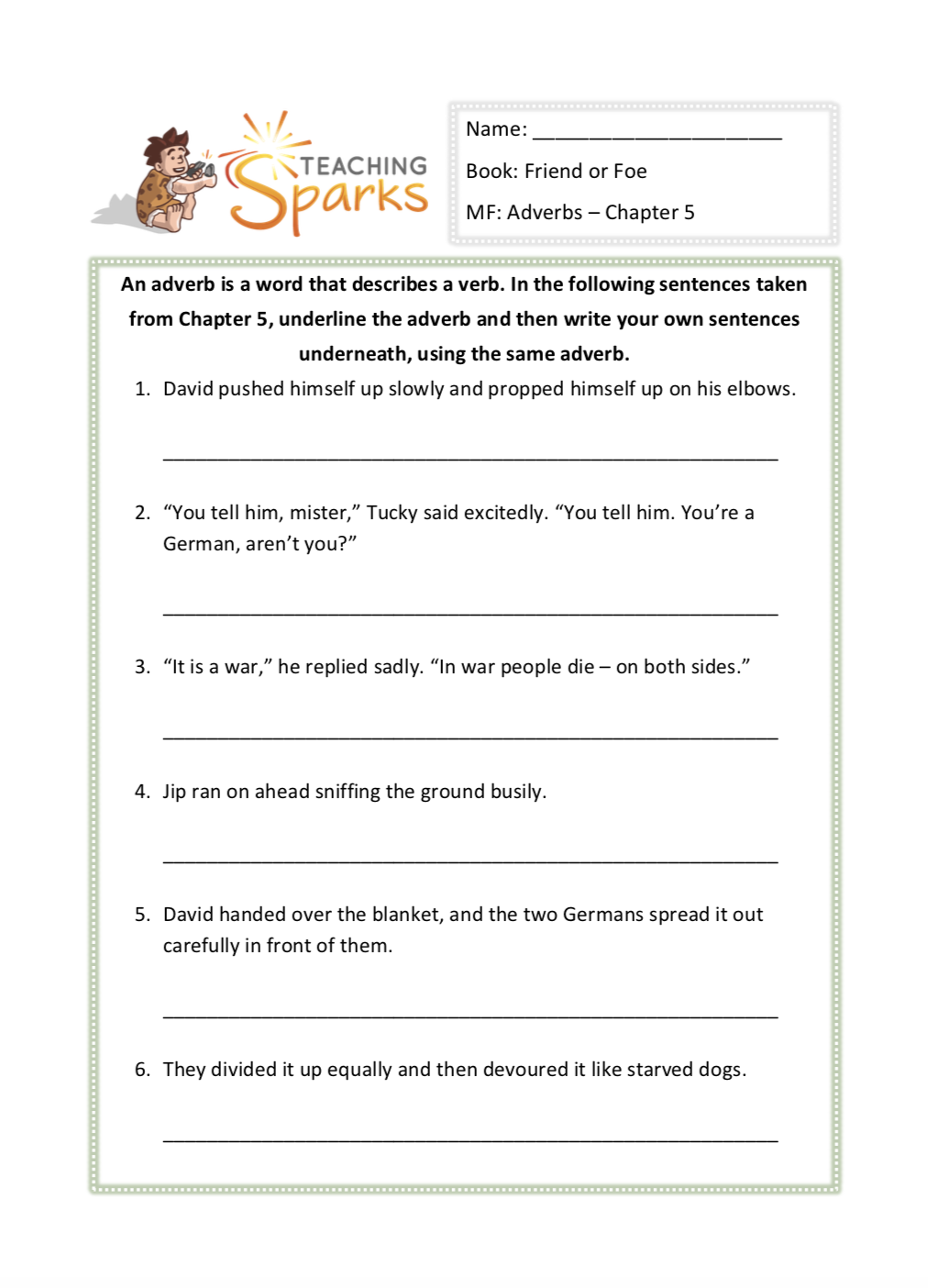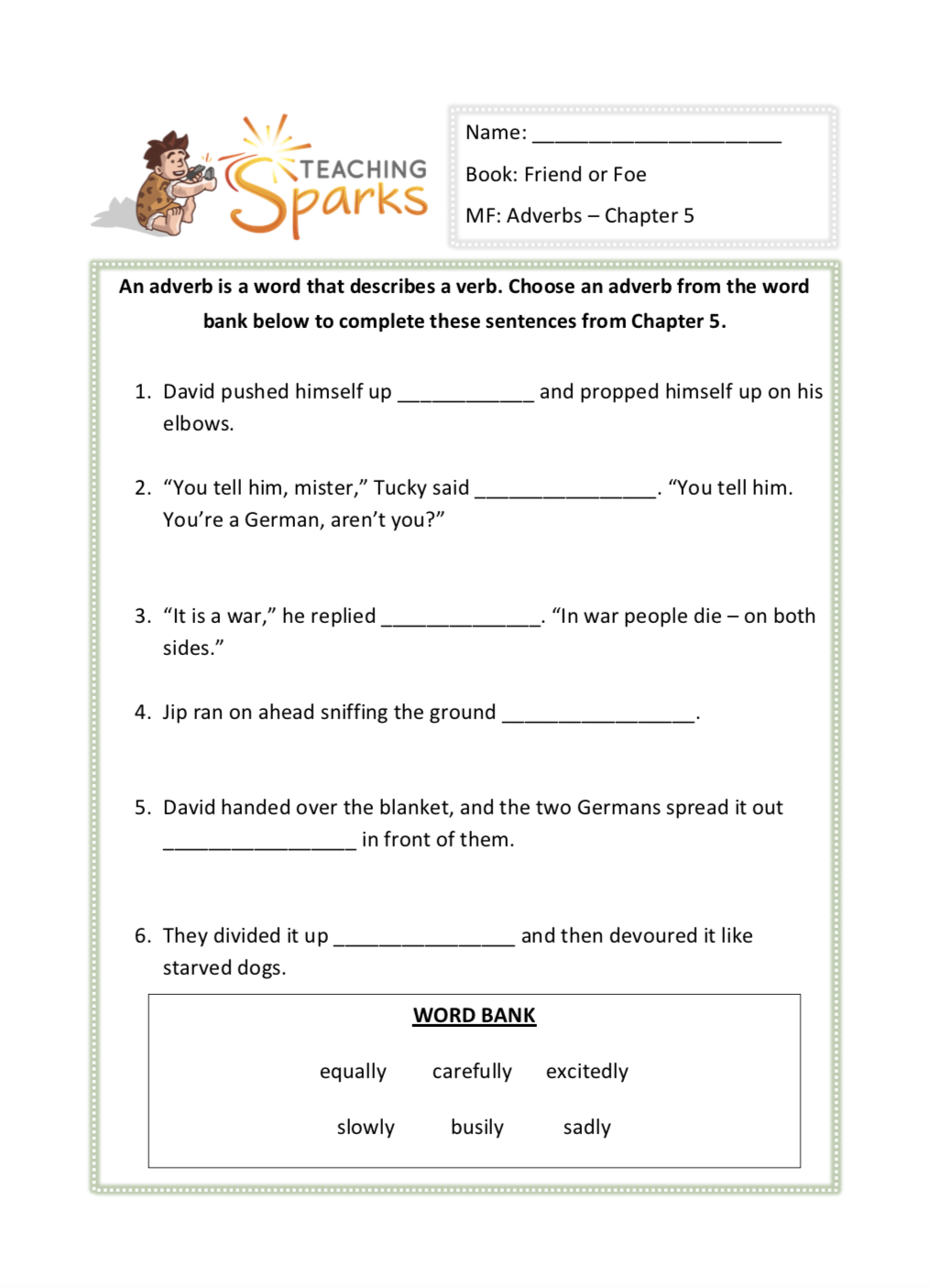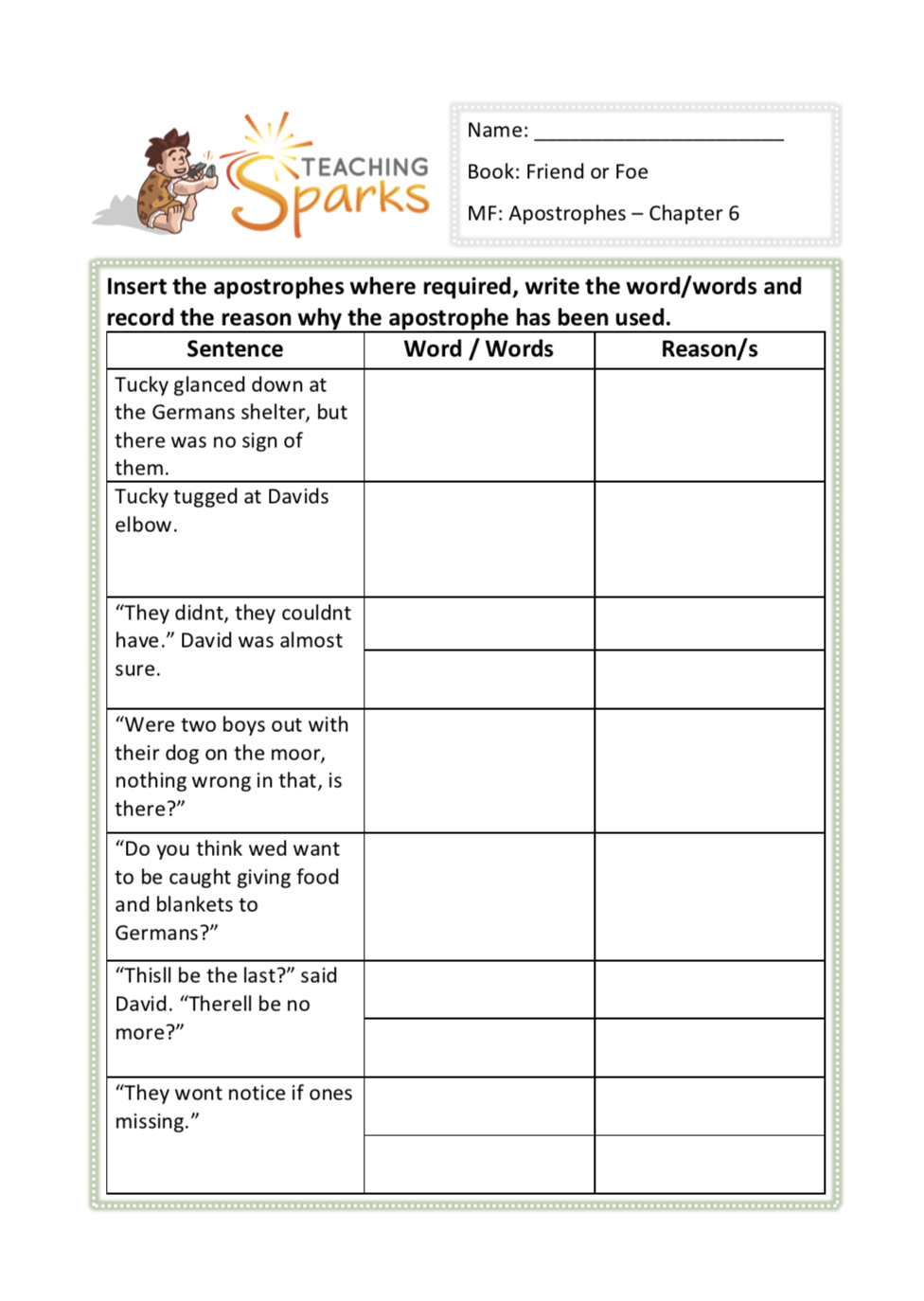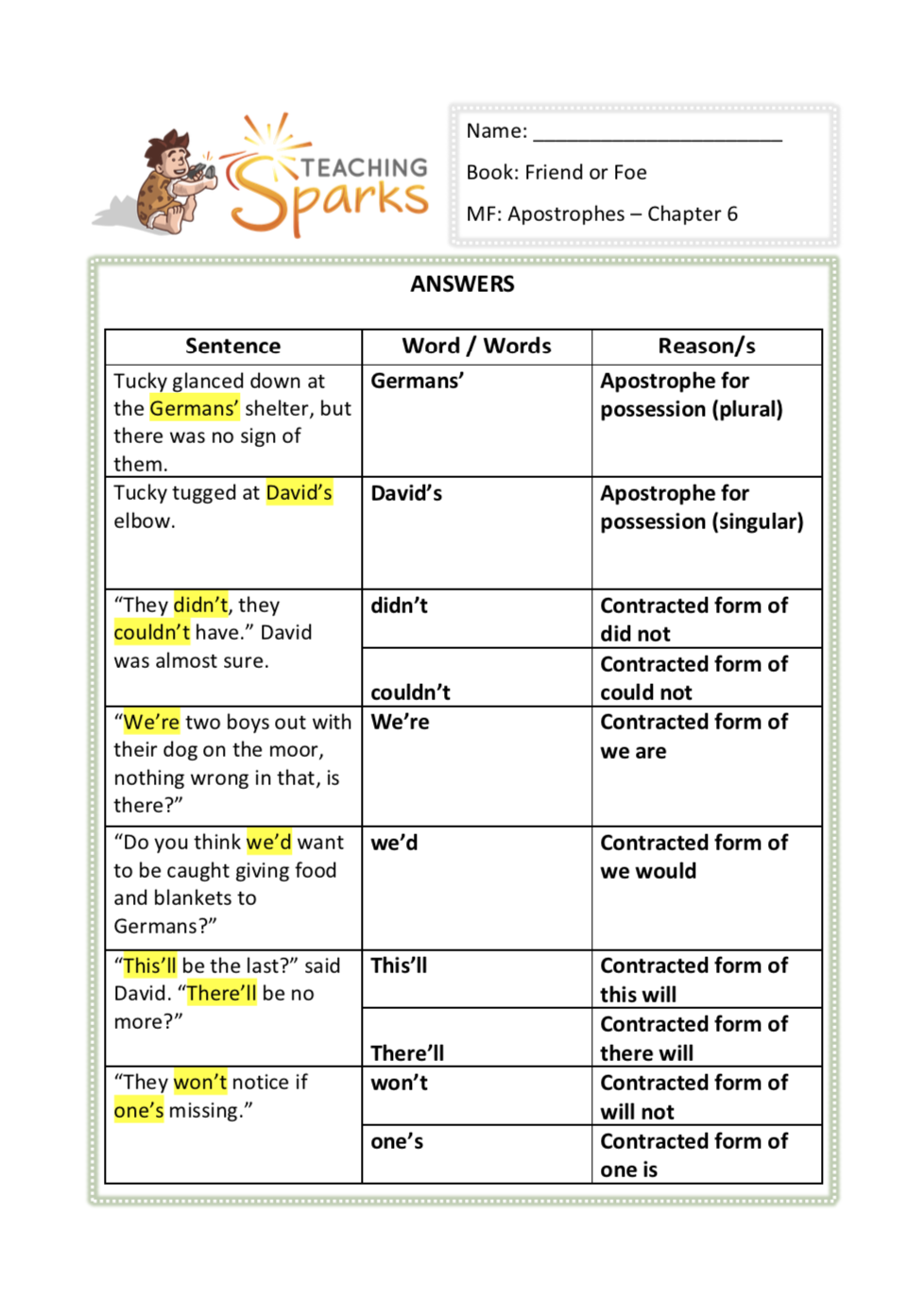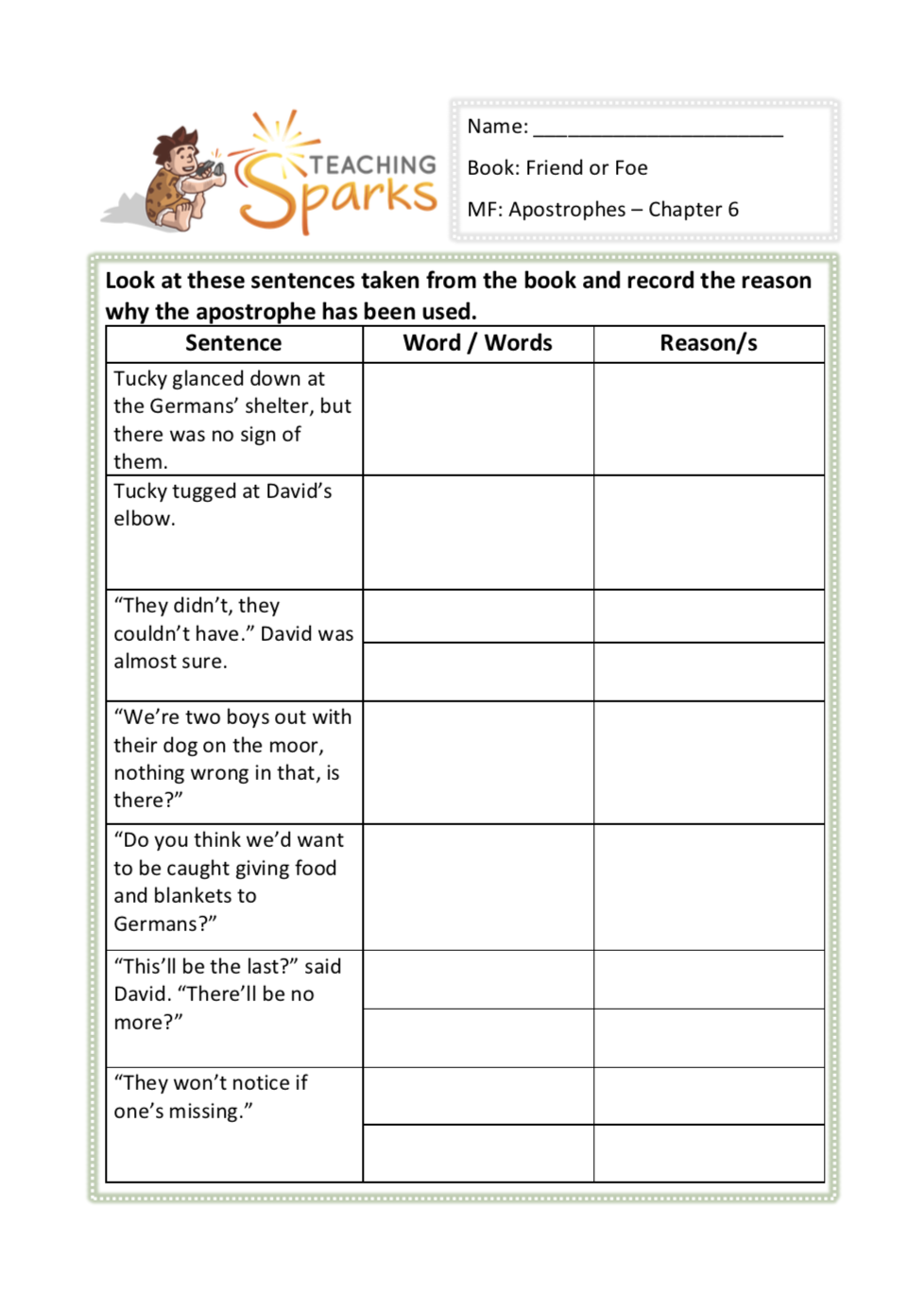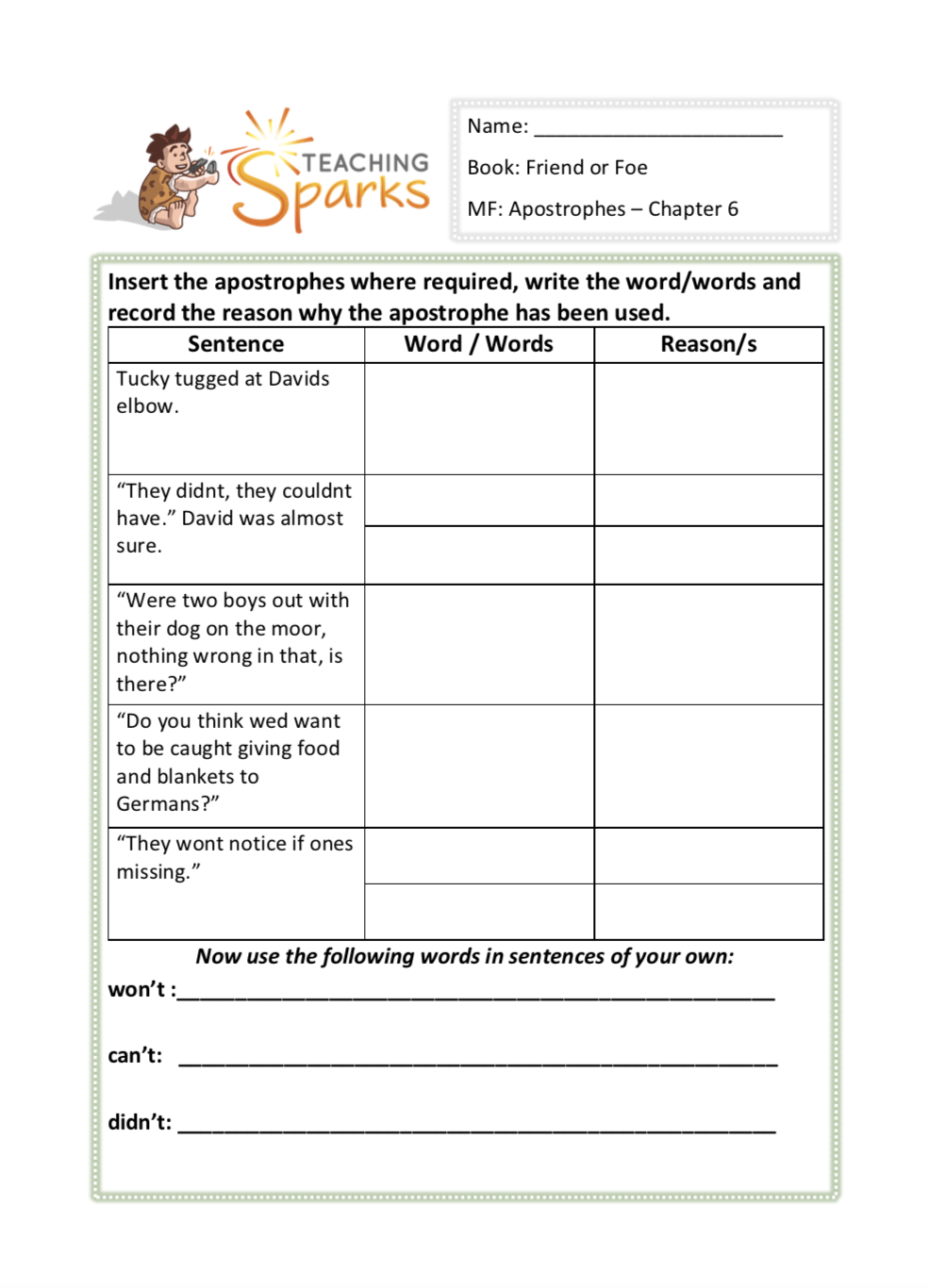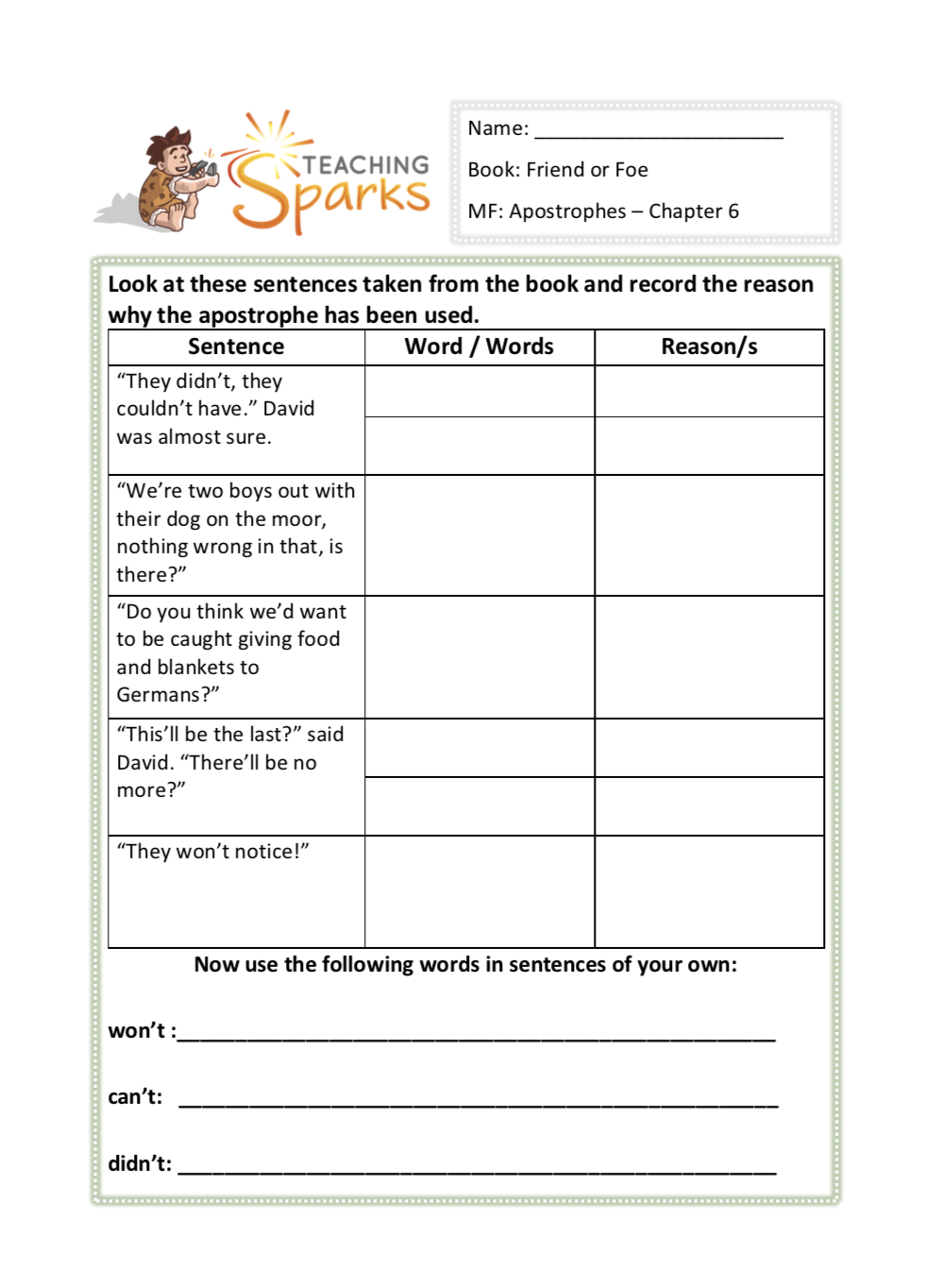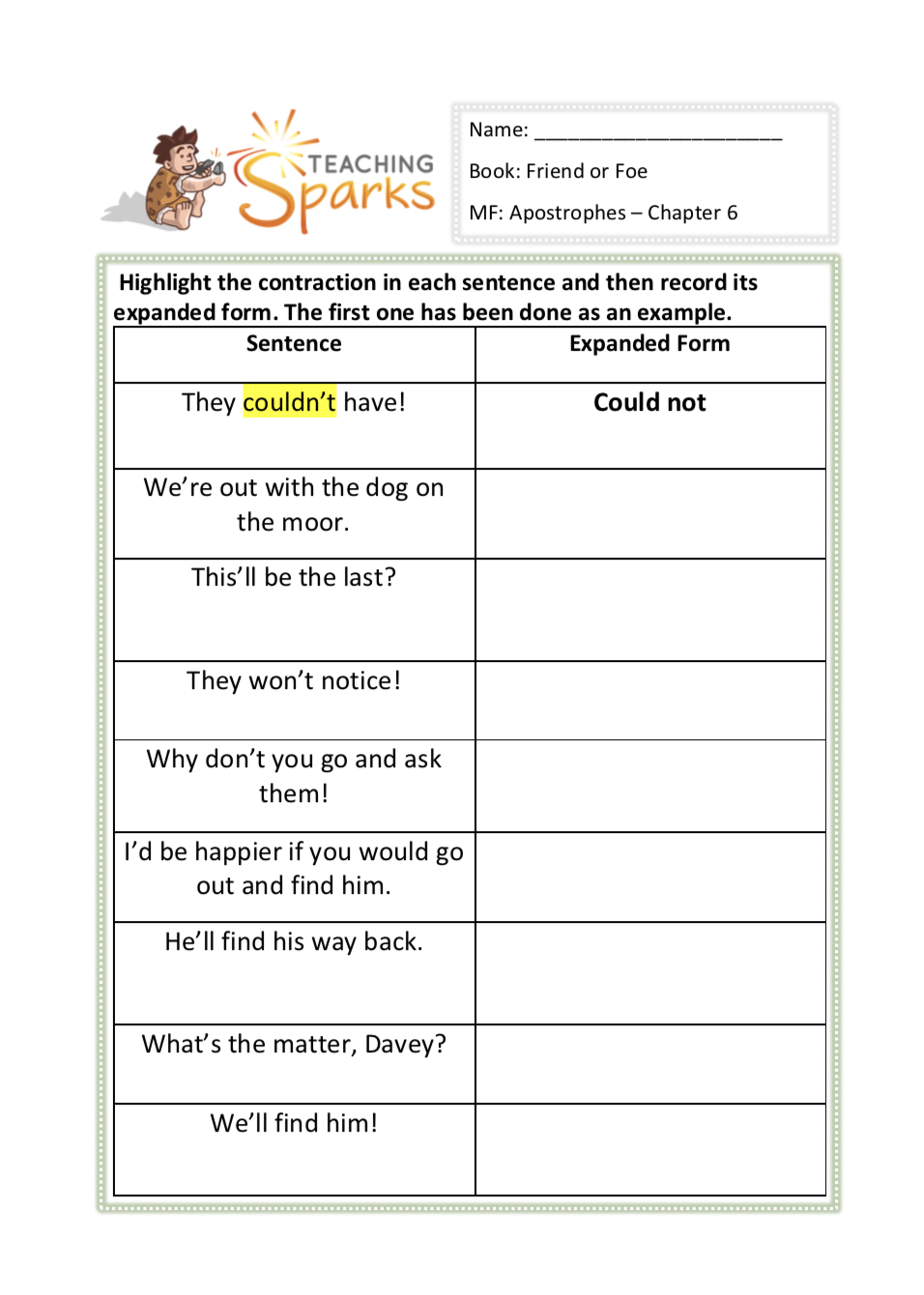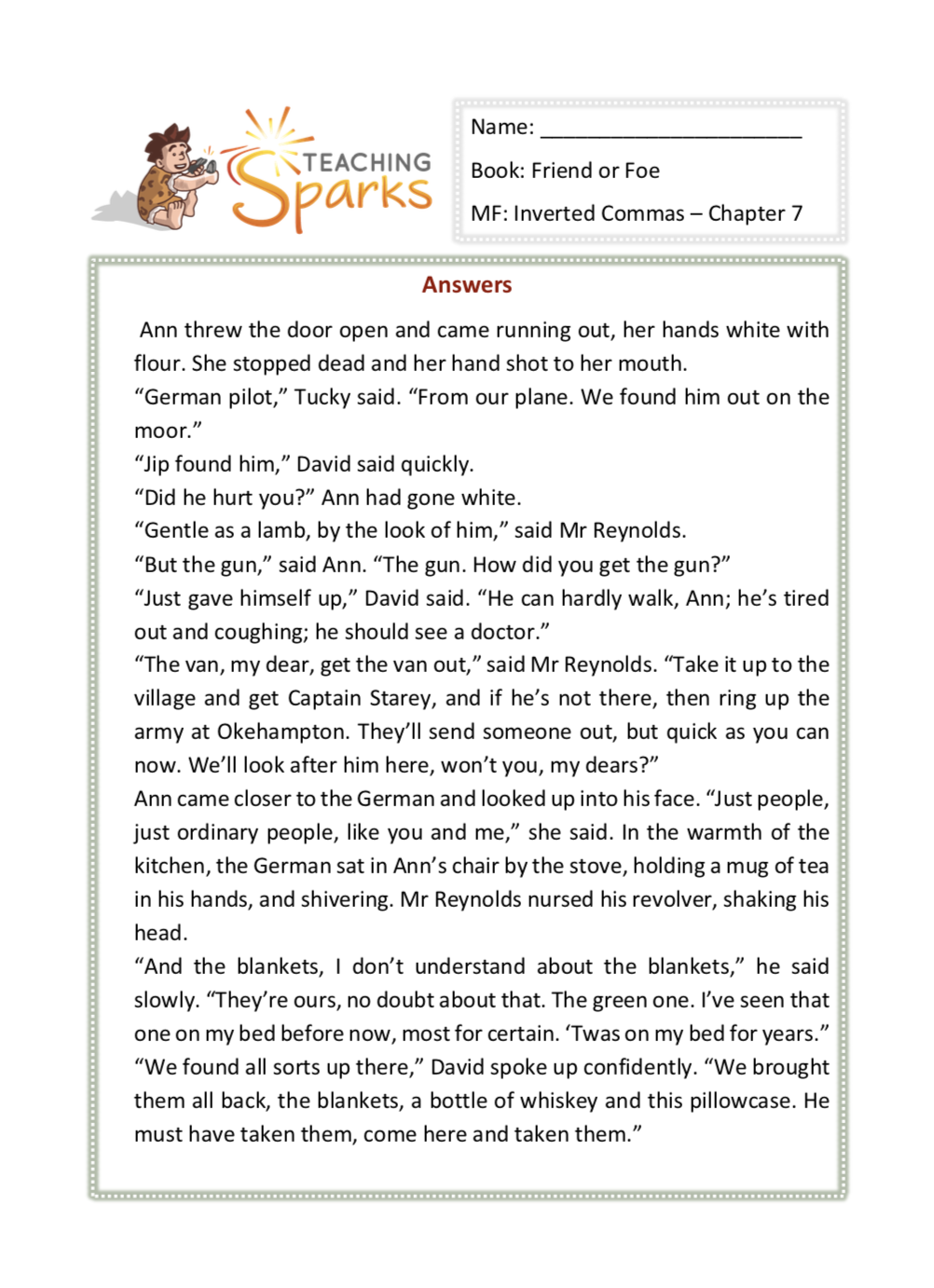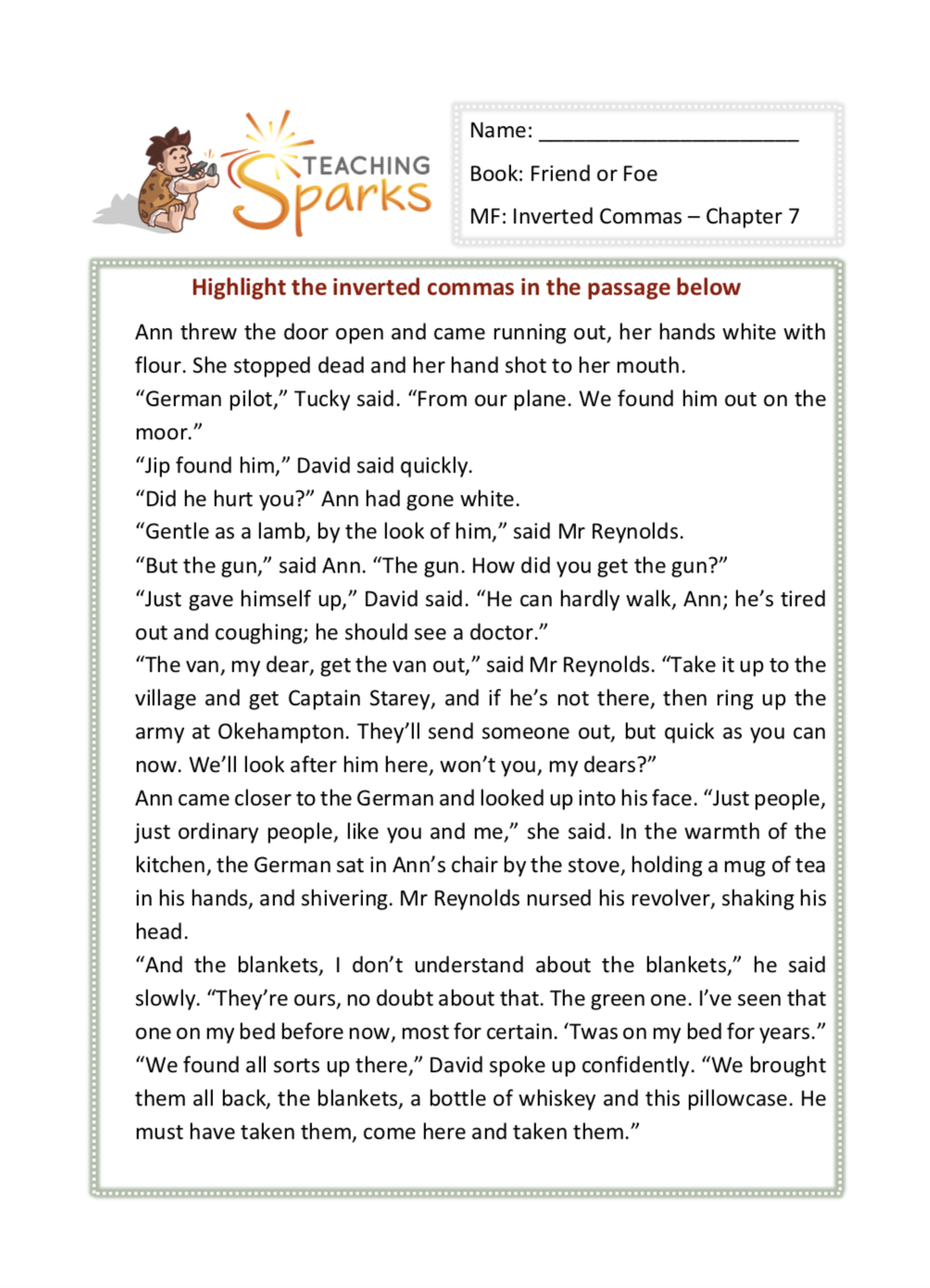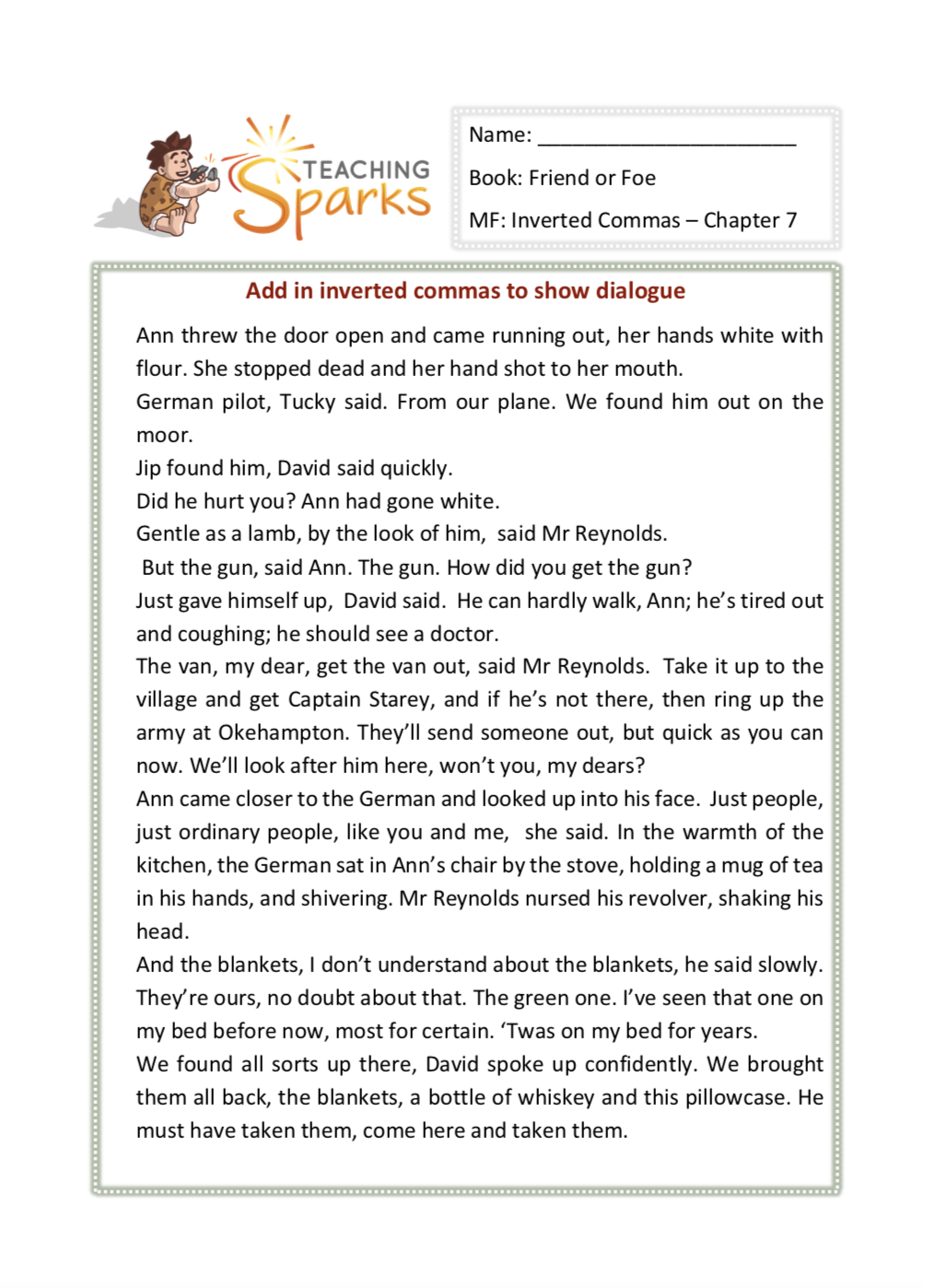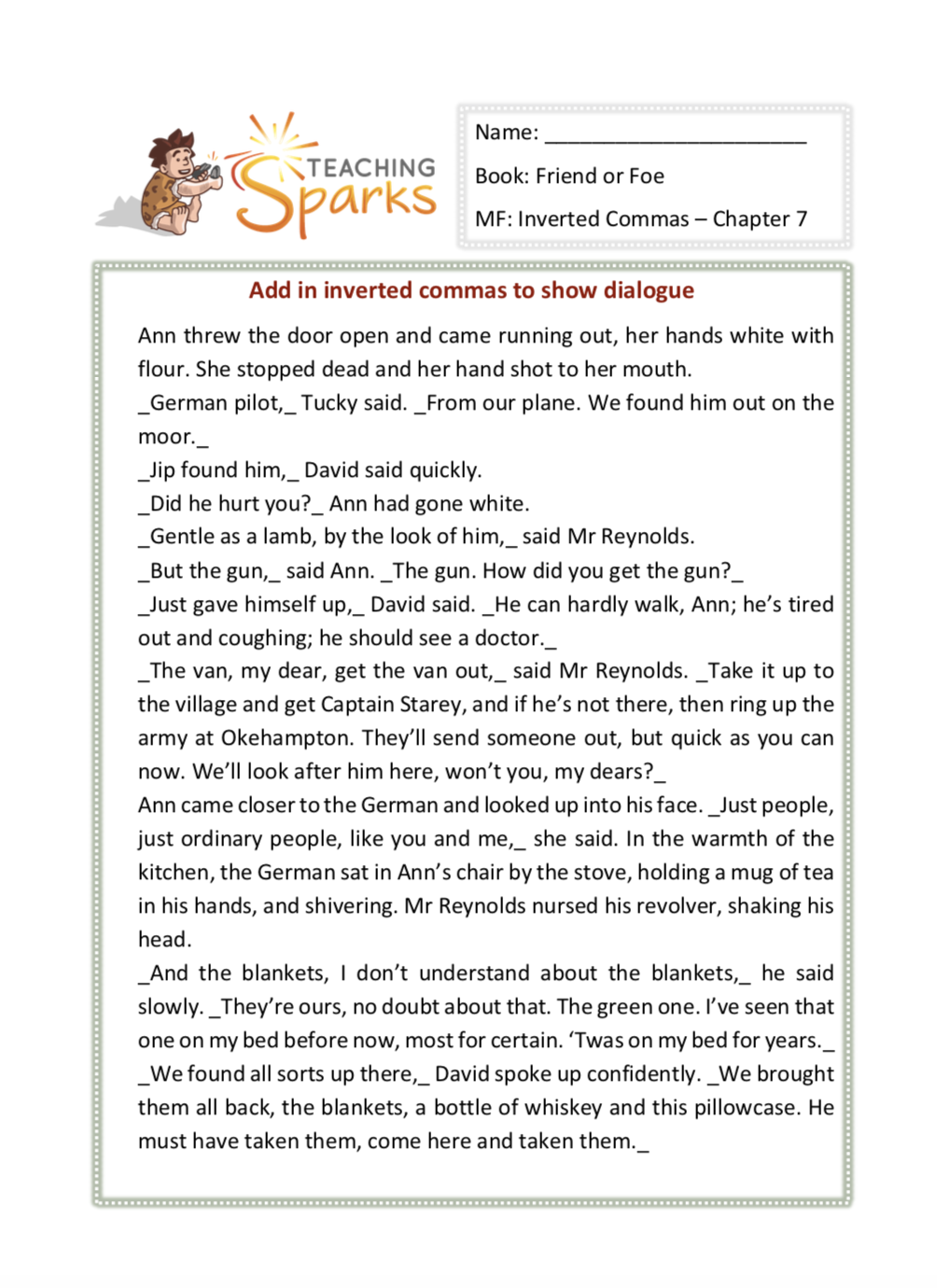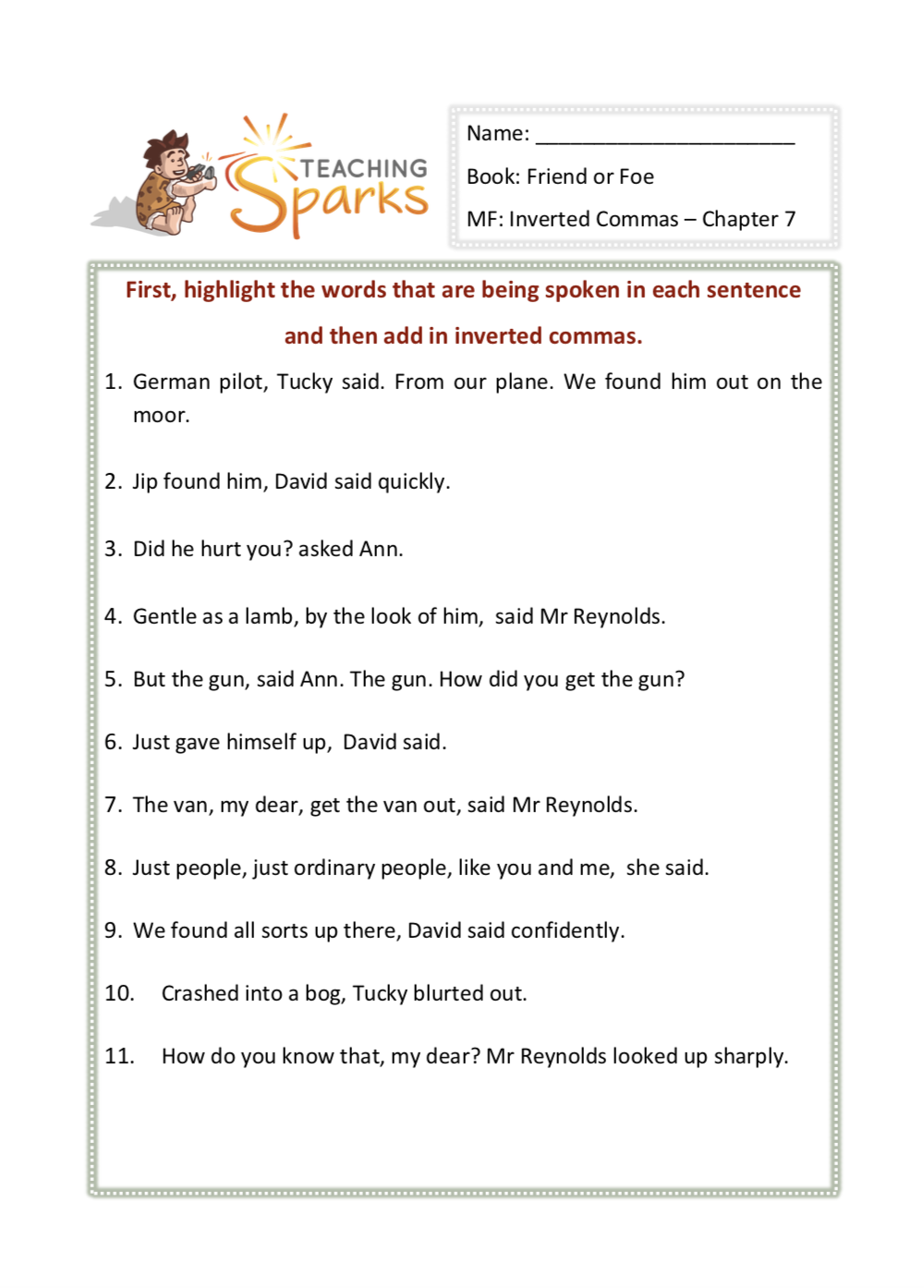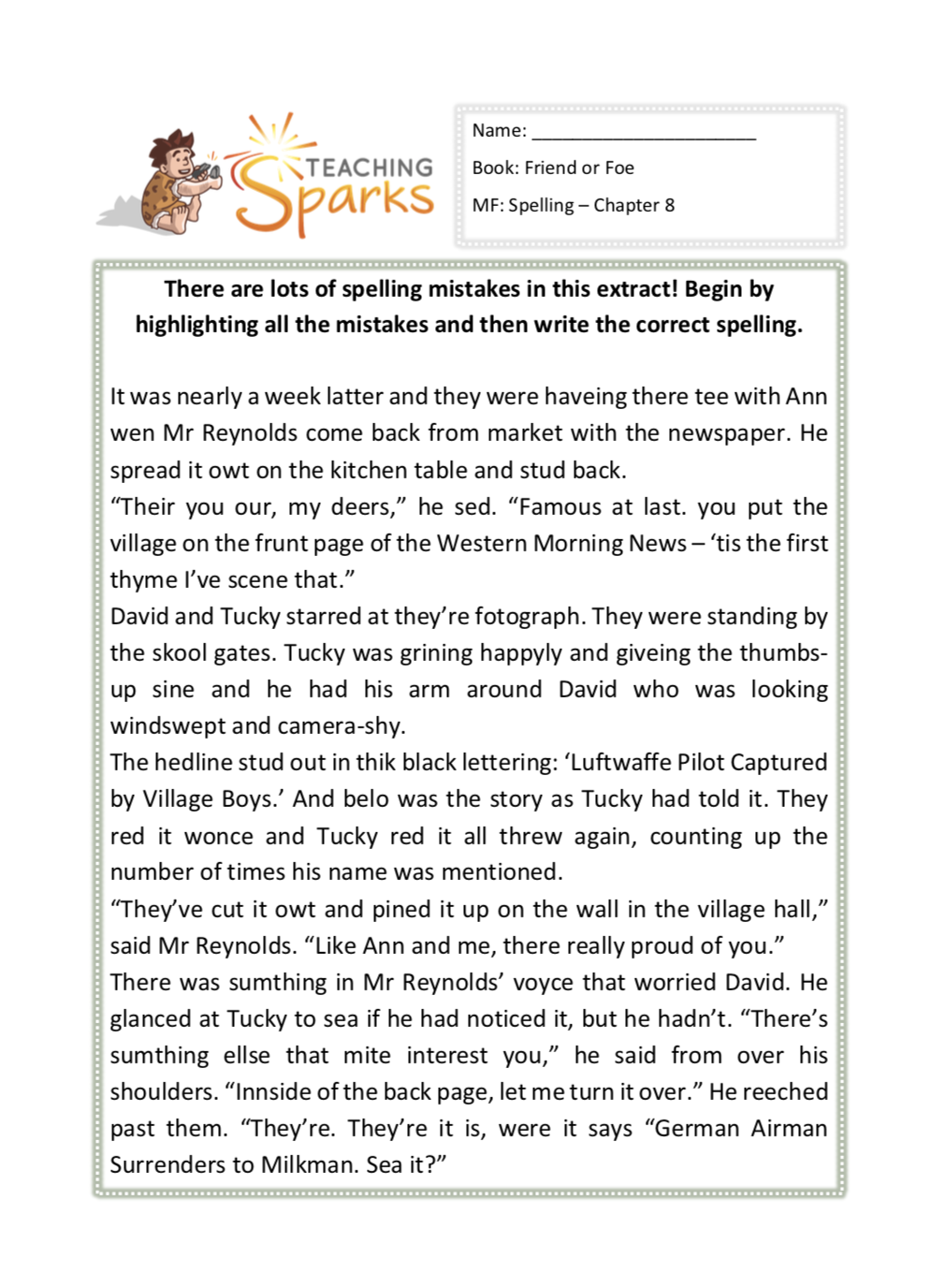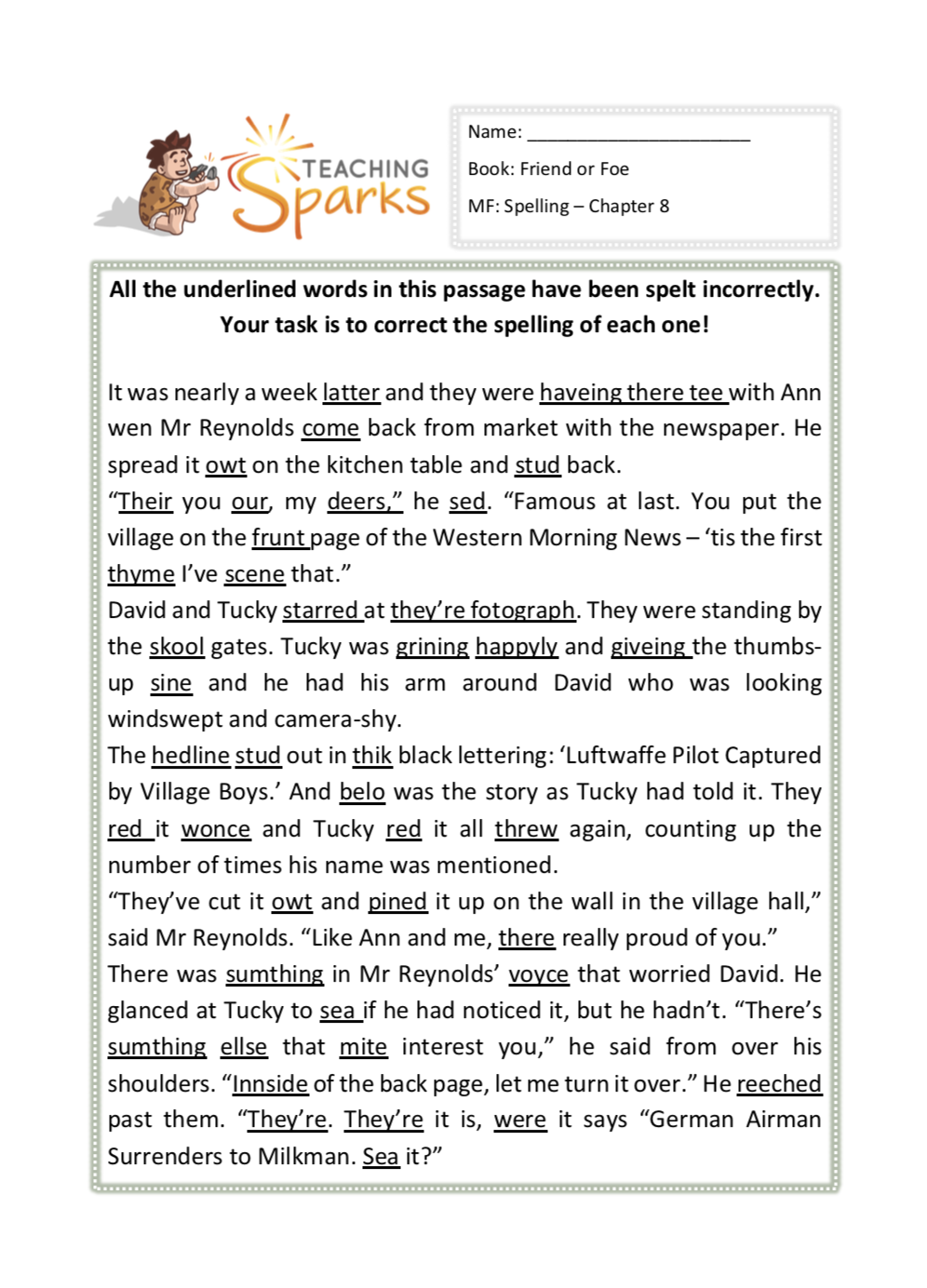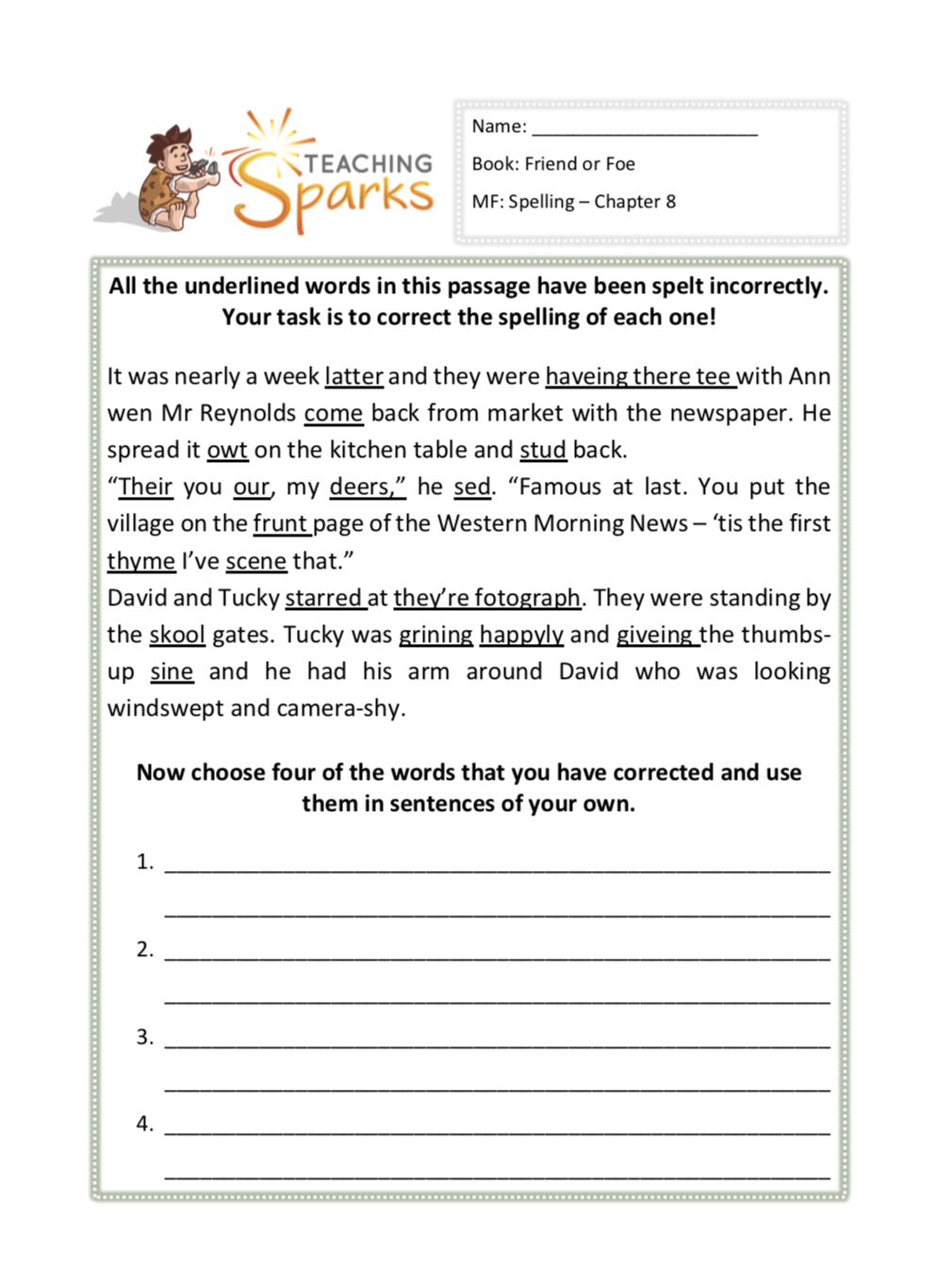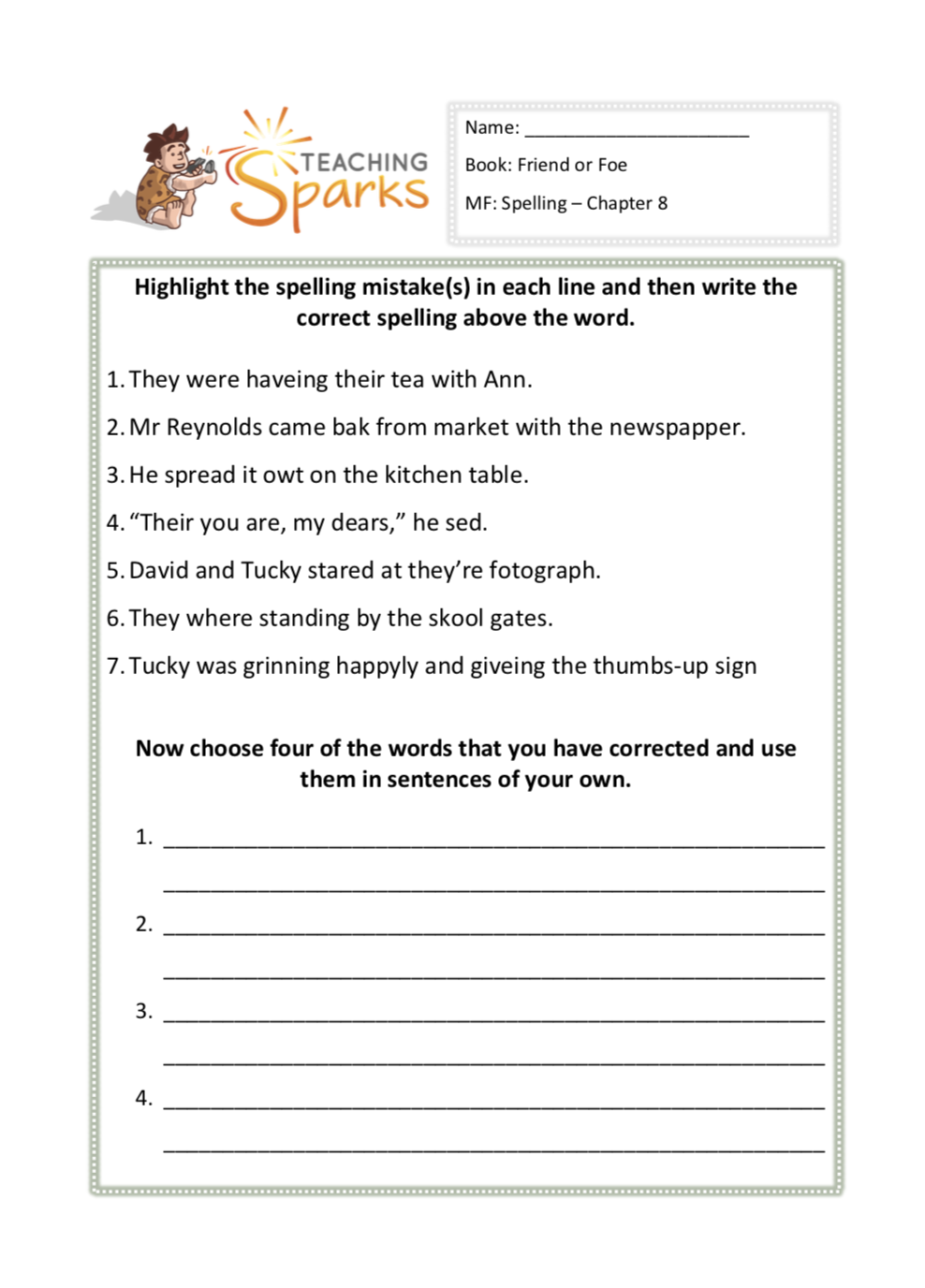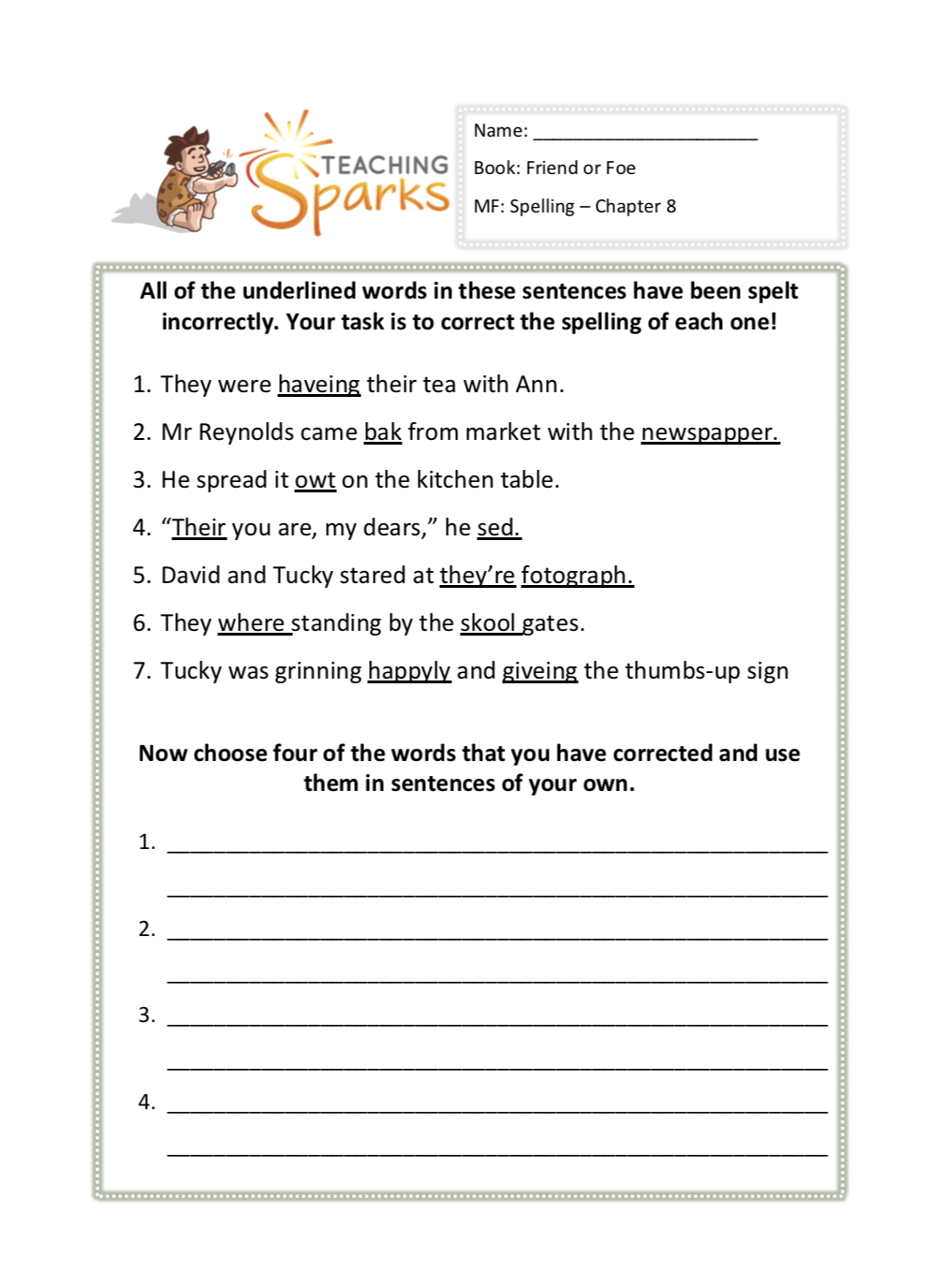Friend or Foe
Friend or Foe by Michael Morpurgo
Friend or Foe is a gripping World War II book from the author of War Horse and former Children’s Laureate Michael Morpurgo.
Evacuated from London, David and Tucky feel like the war is a long way away from their new life in the countryside. Then one night the skyline of the moor is lit up with gun flashes, and the distant crump of bombing miles away brings the war back to them and shatters their new-found peace. When a German bomber crashes, the boys feel they should hate the airmen inside. But one of them saves David’s life …
Main Focus: Comprehension - Chapter 1
The activity is linked to chapter 1 of Friend or Foe and is linked to comprehension.
We have created a range of questions linked to the chapter for your Year 3 and Year 4 class to complete.
Unlock ResourceMain Focus: Vocabulary Extension - Chapter 2
This activity focuses on some of the vocabulary and focuses on chapter 2 of the story.
Your class will explore new words, definitions and apply the words in a new context.
Unlock ResourceMain Focus: Gendered Nouns for Animals
In Chapter 3, Mr Reynolds uses the words ‘filly’ and ‘colt’ when he is telling the boys about his horses. This shows that different words can often be used for the male and female animals within a species. E.g. a filly is a young female horse and a colt is a young male horse. Your class will draw a line to match the masculine and feminine nouns. The first has been done as an example.
Unlock ResourceMain Focus: Diary Entry - Chapters 1-3
After reading Chapters 1-3, write David’s diary entry for the day that he was evacuated. The diary entry should begin by describing waking up at home in the morning and should end with going to bed at Mr Reynolds’ farm. Remember that a diary entry should:
- be written in first person (you will write as if you are David).
- be written in the past tense.
- describe events in chronological order (the order in which they happened).
- include information on how a character is feeling.
We have created an example diary entry for your class to read and also a framed diary entry to help children who perhaps need more structure.
Unlock ResourceMain Focus: Punctuation
This resource is linked to punctuation and chapter 3 of the book.
In this resource your class will look at: inverted commas, question marks, capital letters, full stops, apostrophes and commas. We have also differentiated this resource to cater for Year 3 and Year 4 classes.
Unlock ResourceMain Focus: Suffixes - Chapter 4
A suffix is a group of letters which are added to the end of a word to make a new word.
Your KS2 class will use the table below to sort the words that end in the suffix -ing. The words can all be found in Chapter 4.
Unlock ResourceMain Focus: Adverbs
An adverb is a word that describes a verb. In the following sentences taken from Chapter 5, your class will underline the adverb and then write their own sentences underneath, using the same adverb.
Unlock Resource
Main Focus: Apostrophes
In this activity, your class will add the apostrophes into the sentences where possible.
Your class will work on possessions, both singular and plural as well as apostrophes for contractions.
Unlock ResourceMain Focus: Inverted Commas - Chapter 7
In this activity, your Ks2 class will identify the speech by either highlighting the inverted commas or adding them in to the passage or sentences.
Unlock ResourceMain Focus: Spelling/Editing
This resource focuses on spelling/editing. Your class must read through the passage from Friend or Foe book, chapter 8 and correct the spelling mistakes.
Unlock Resource
